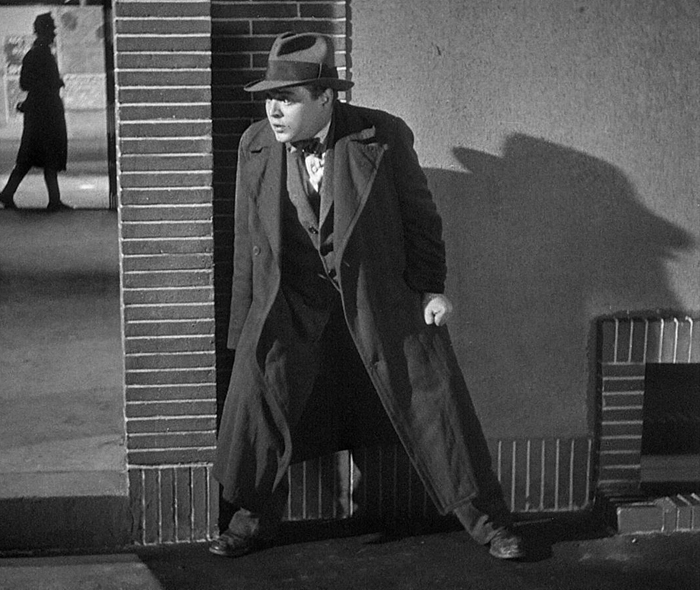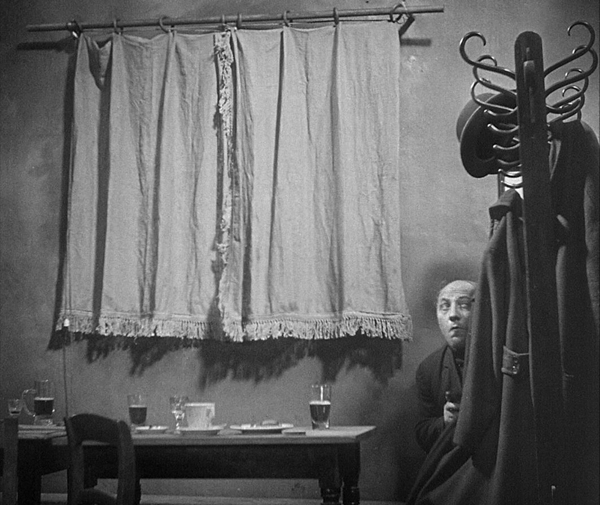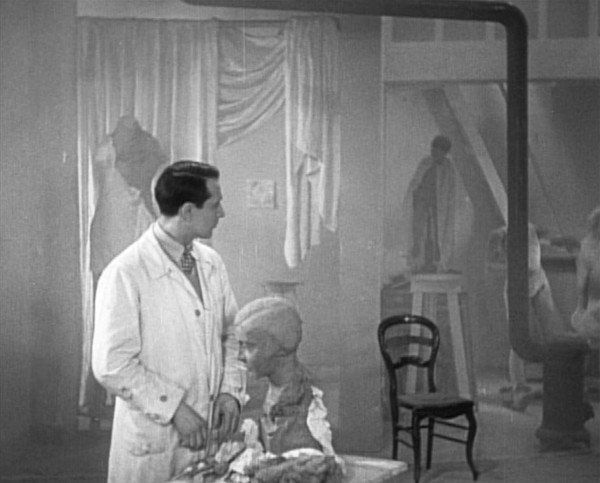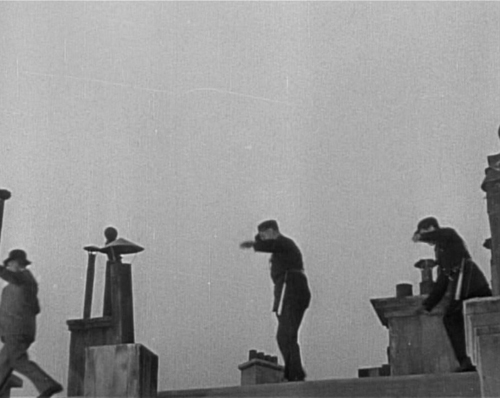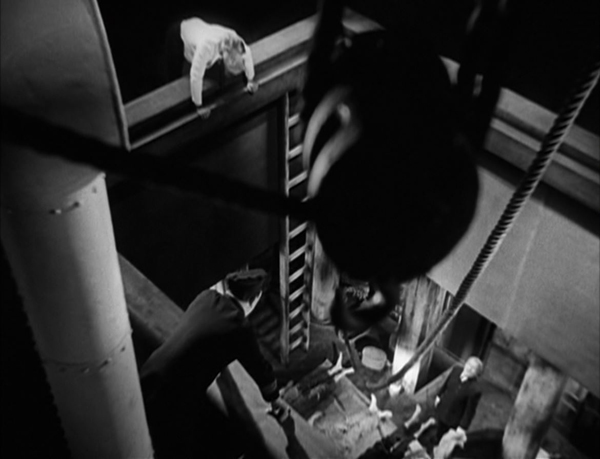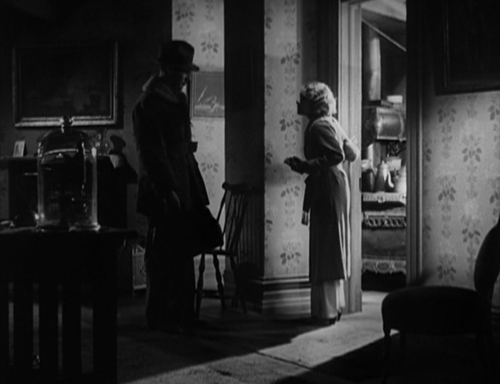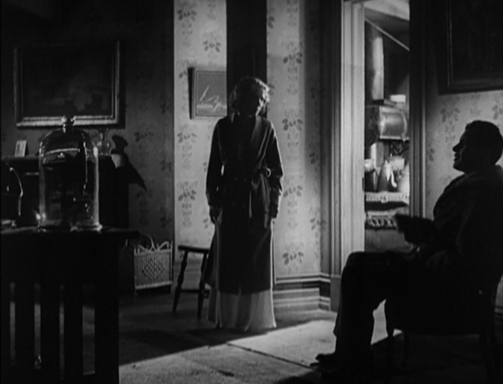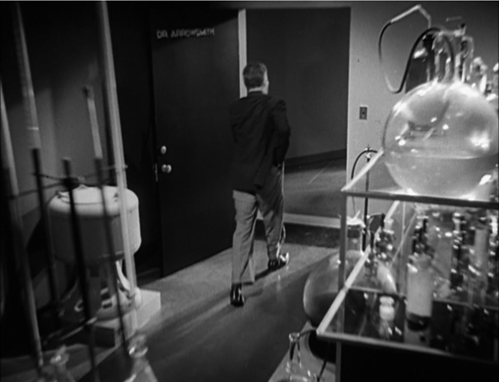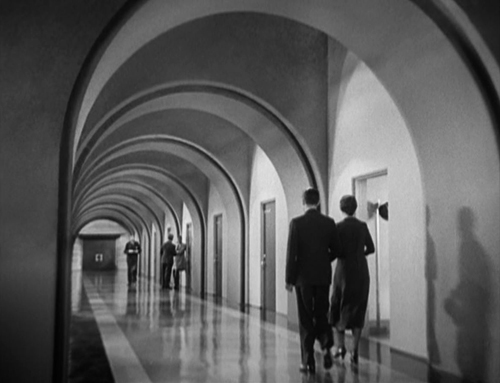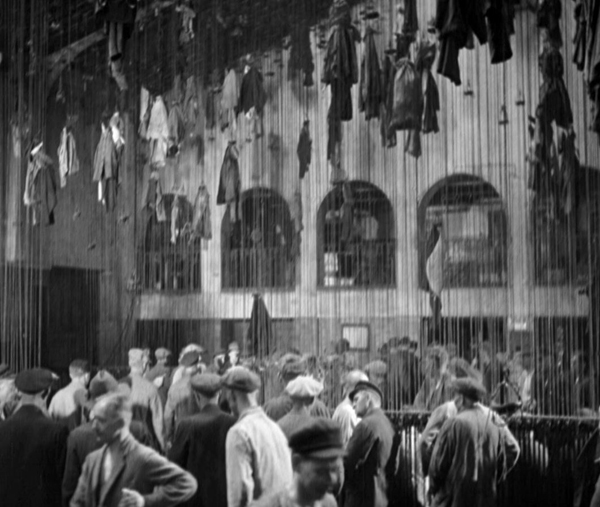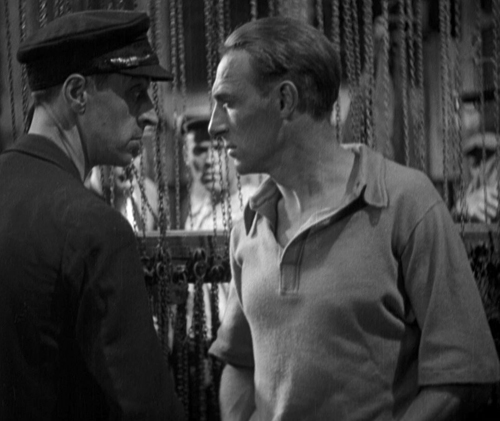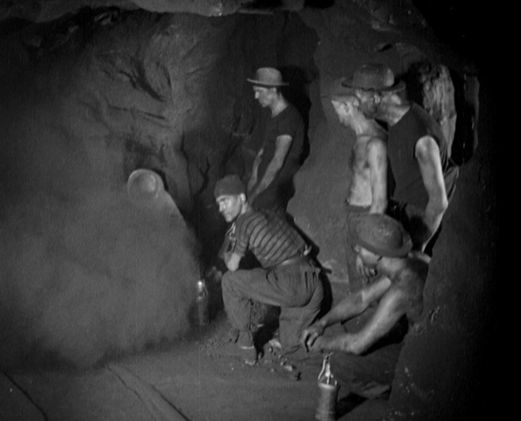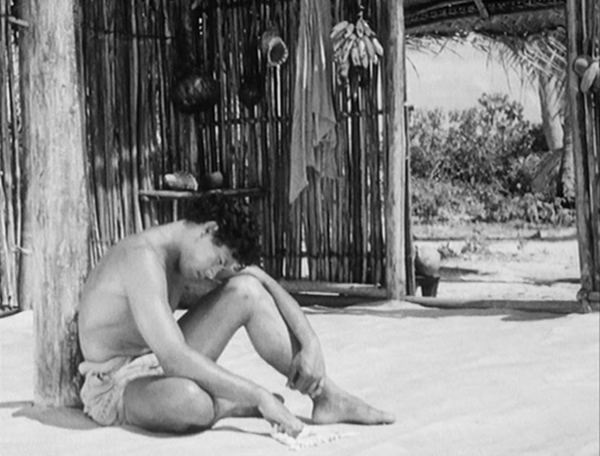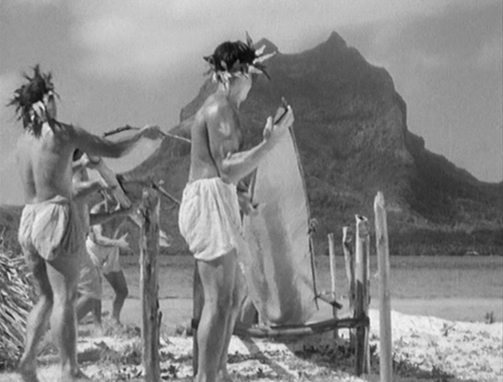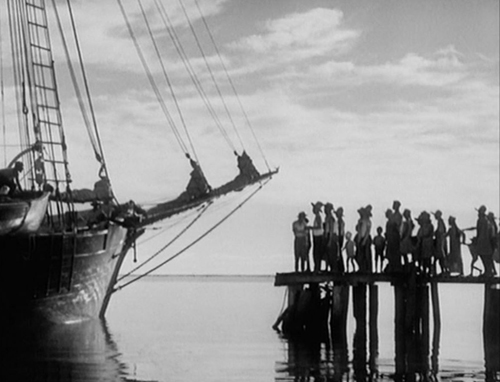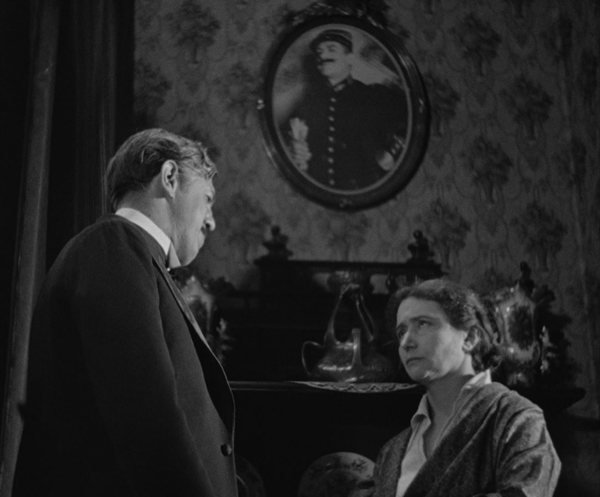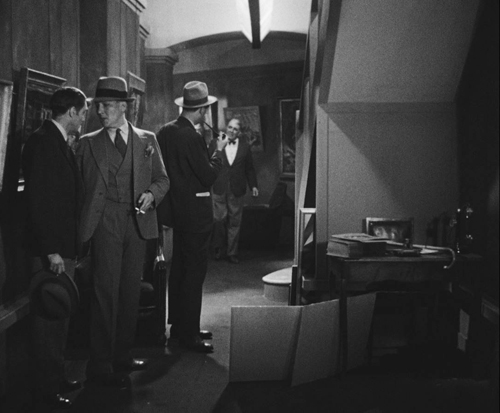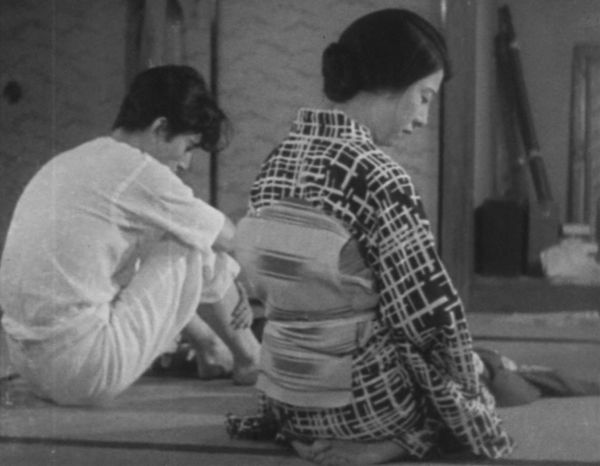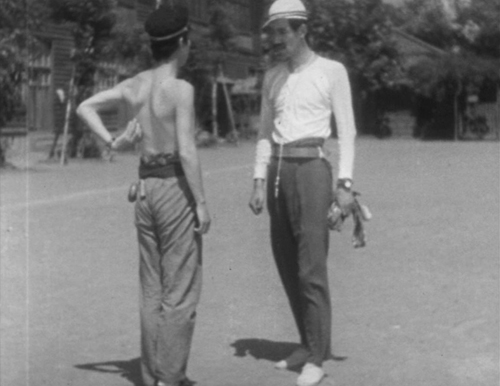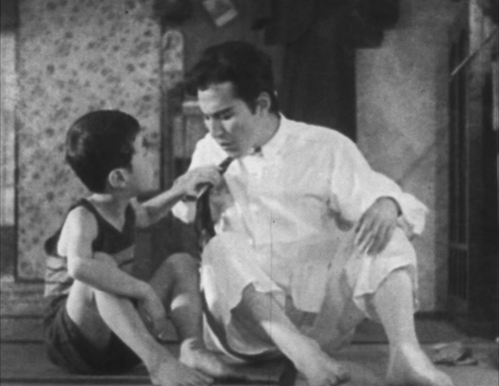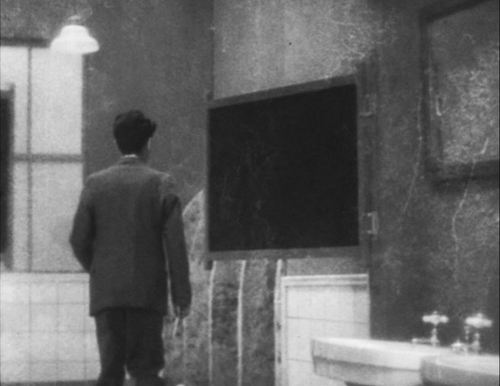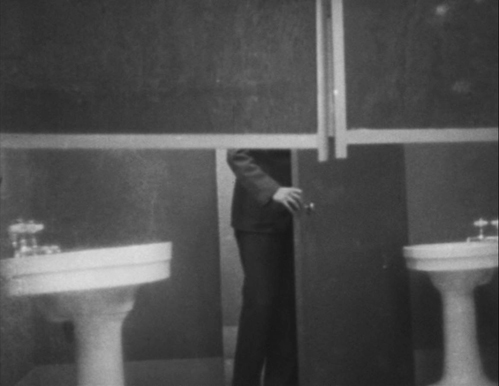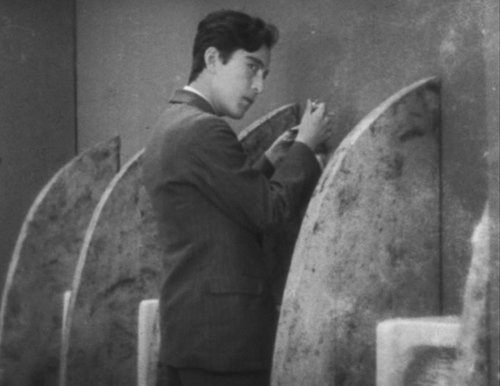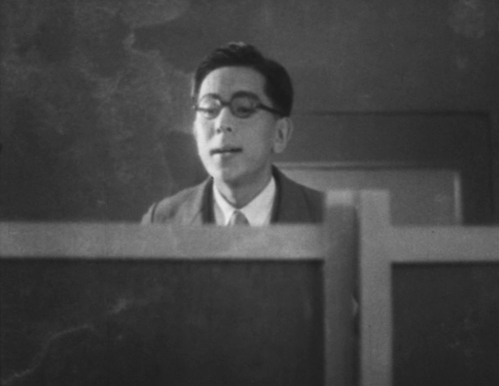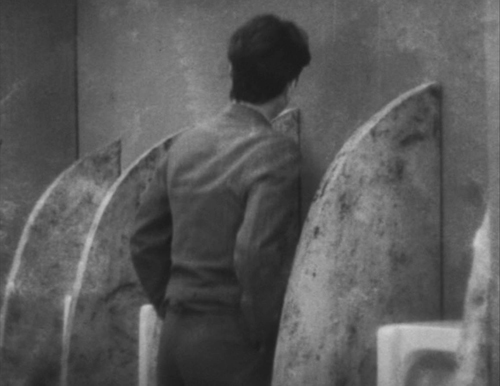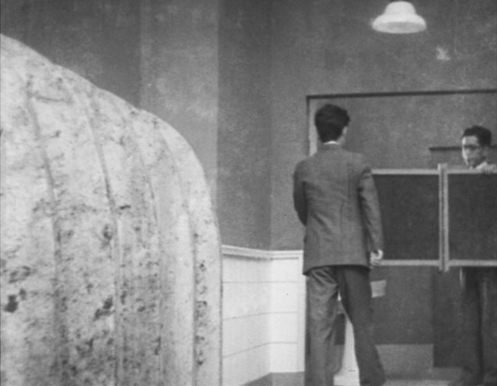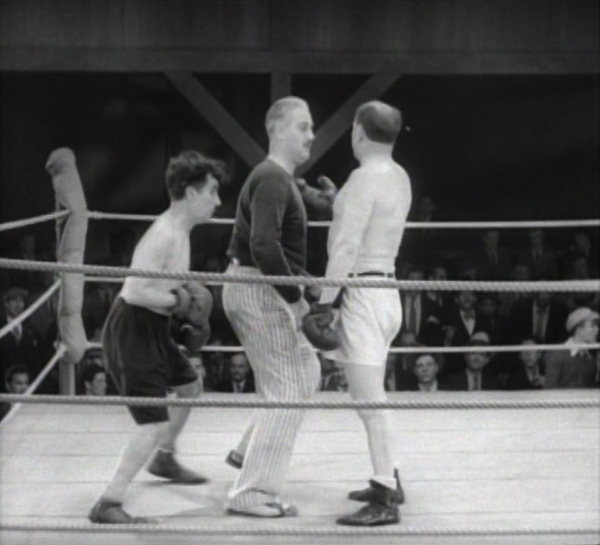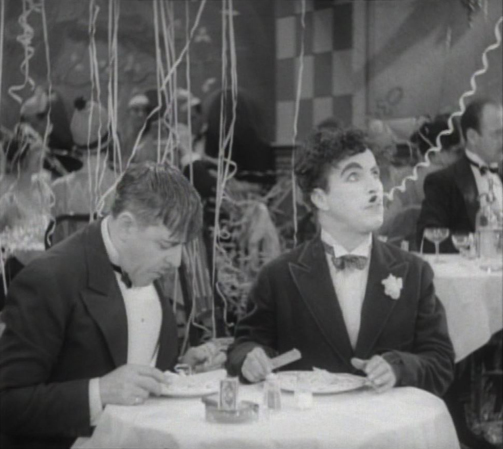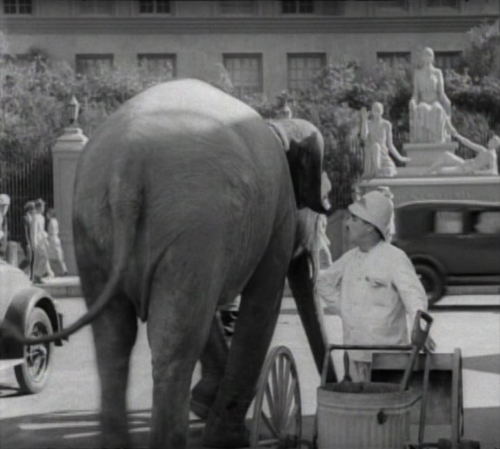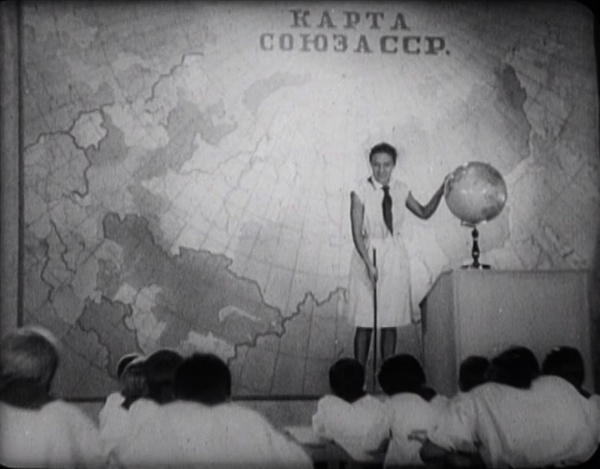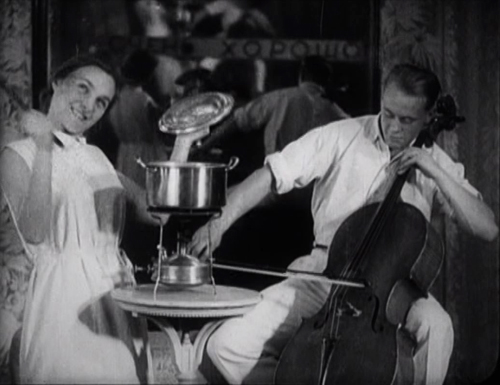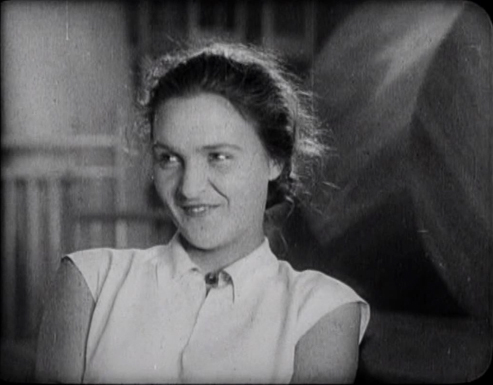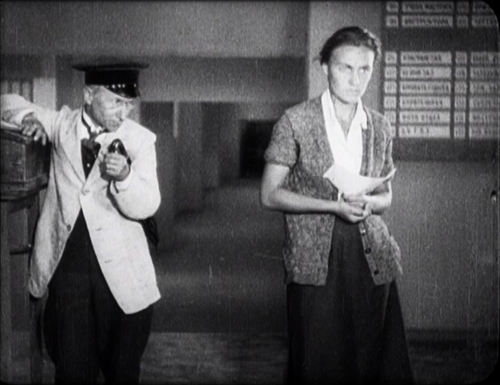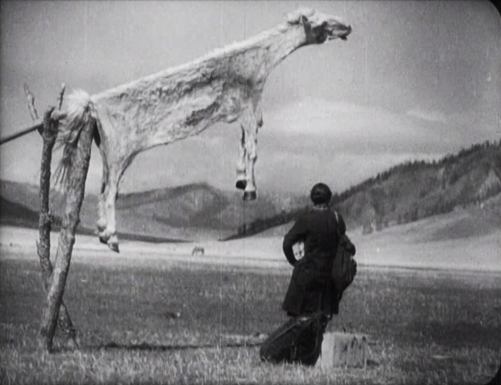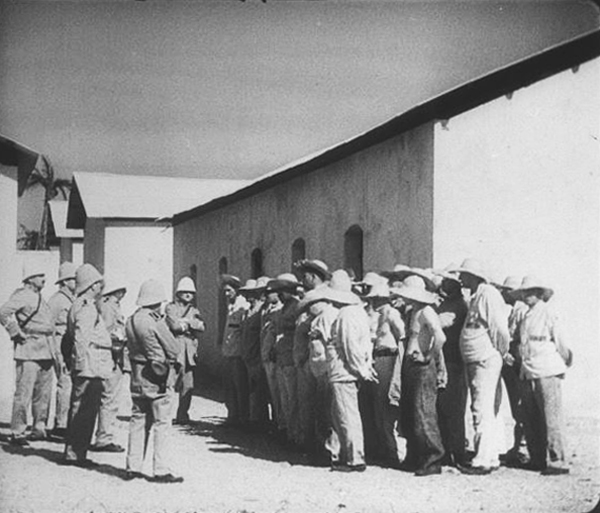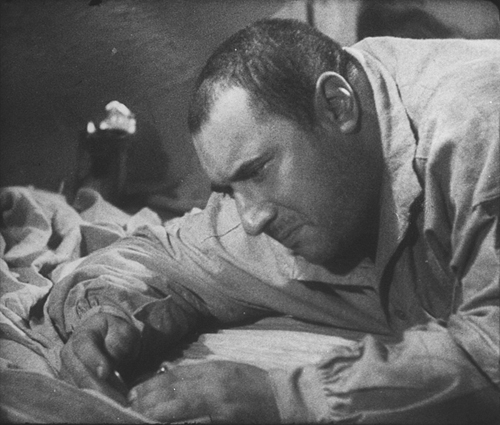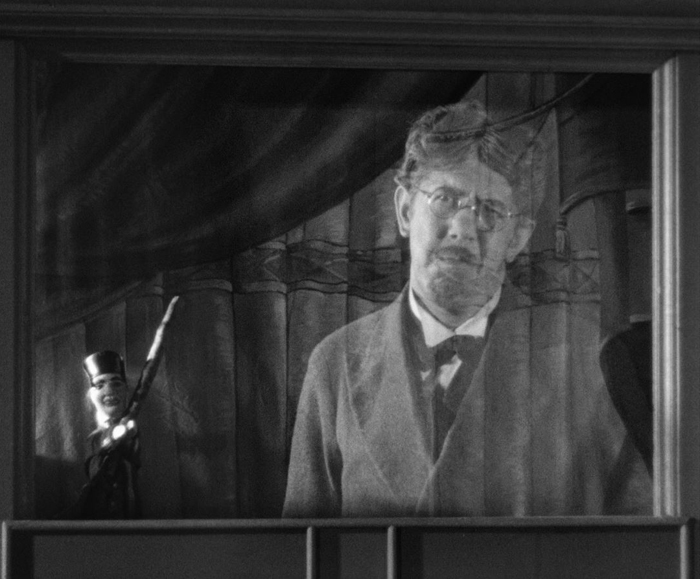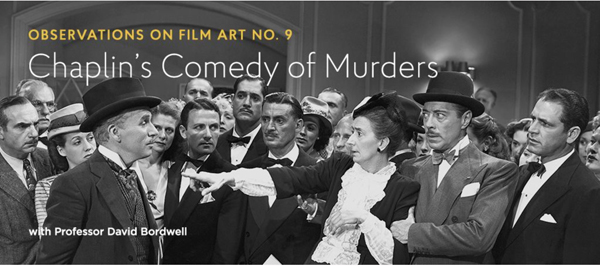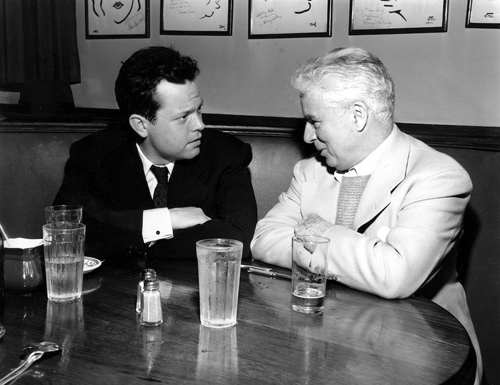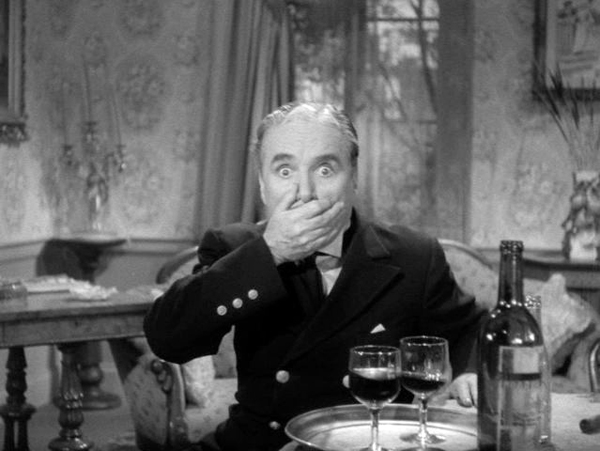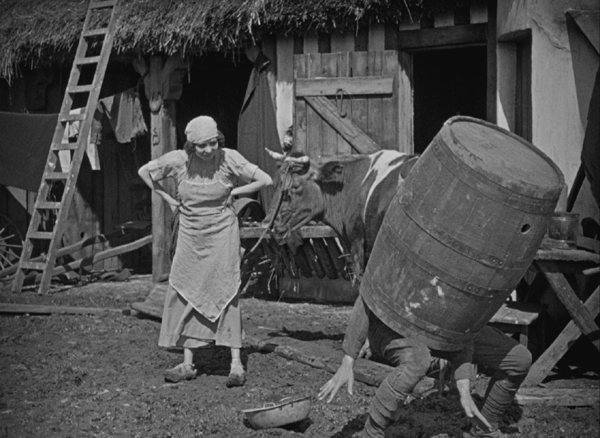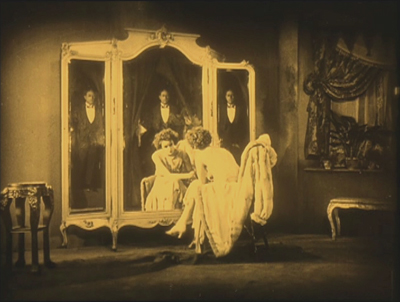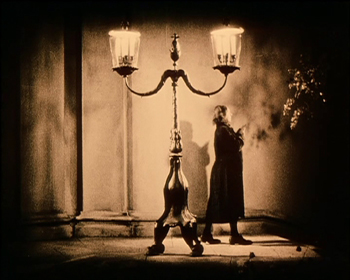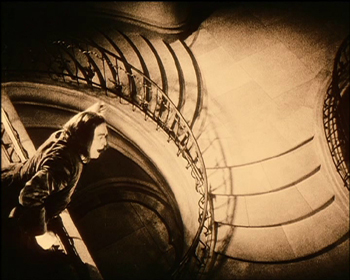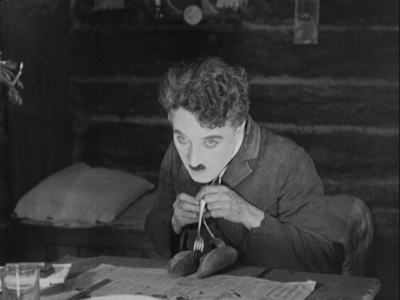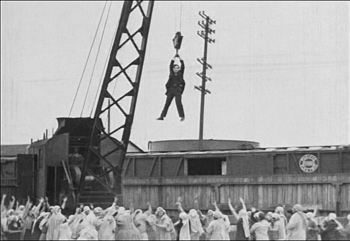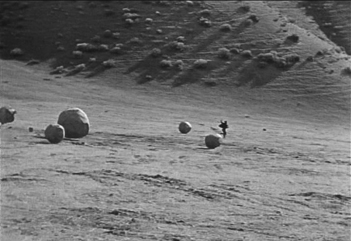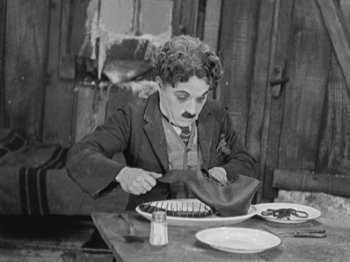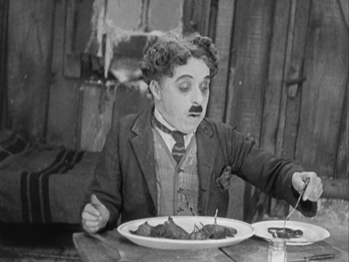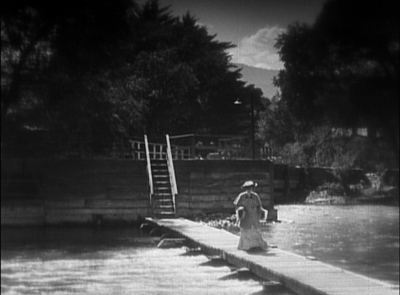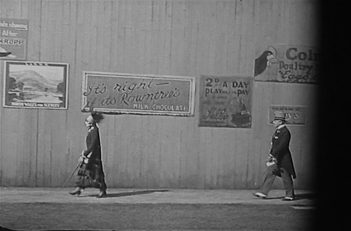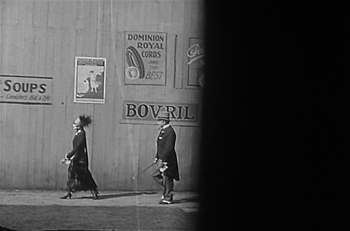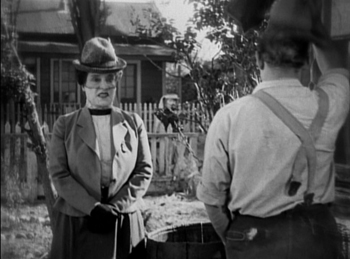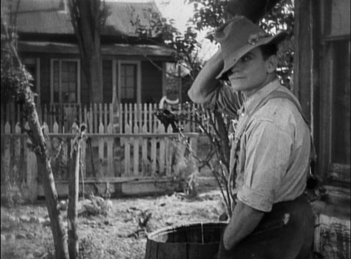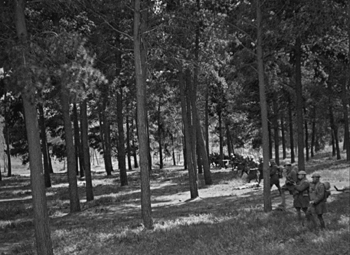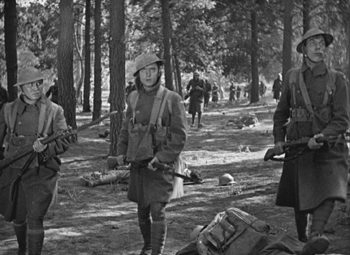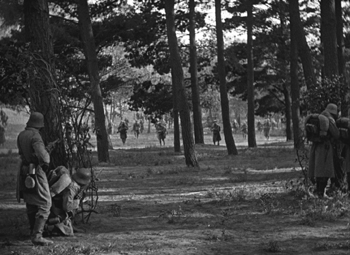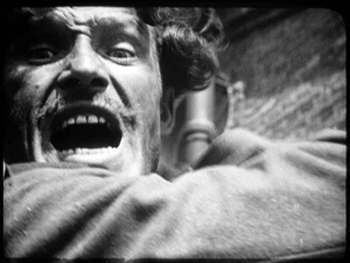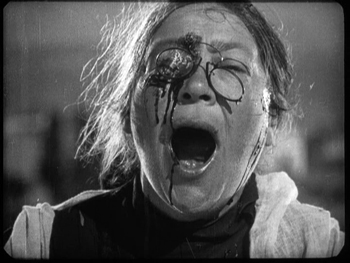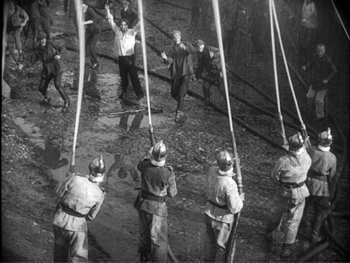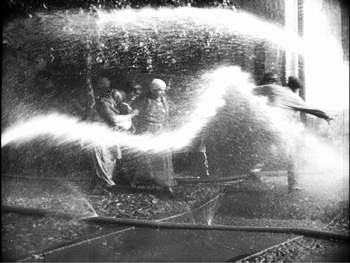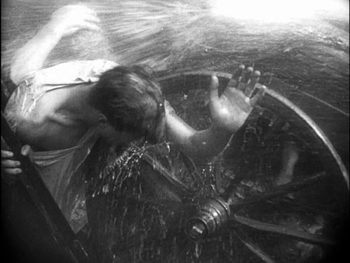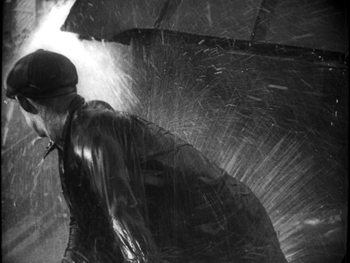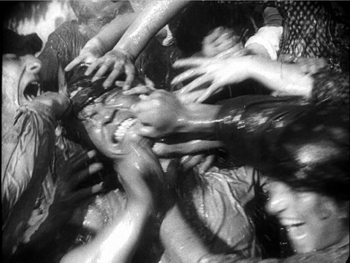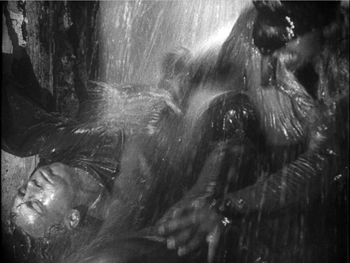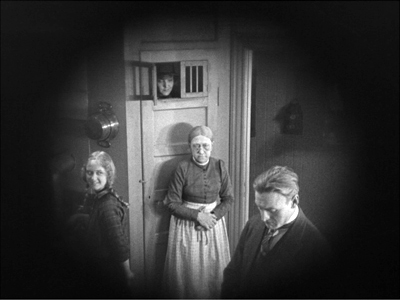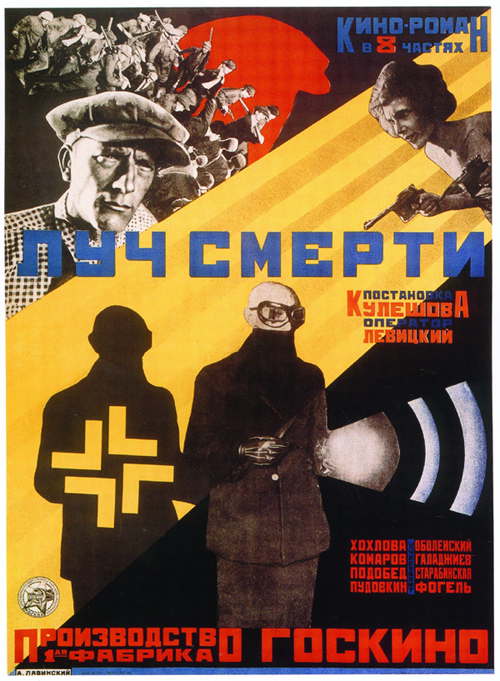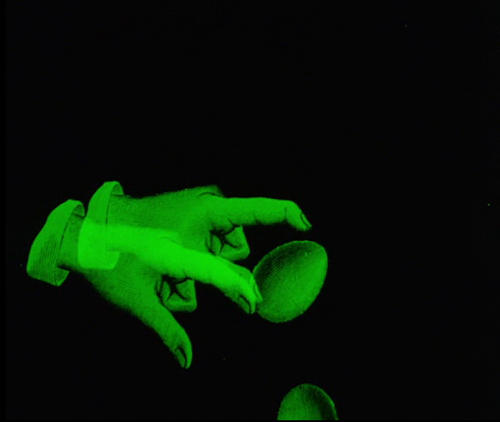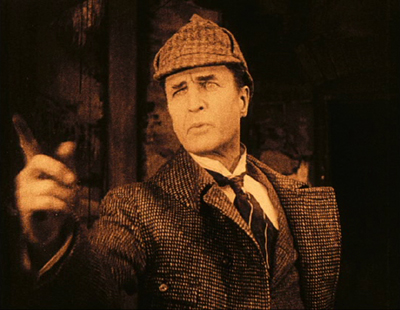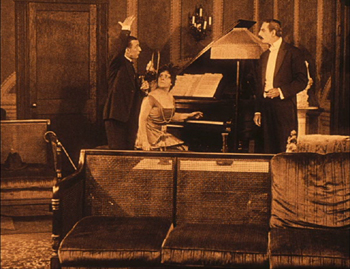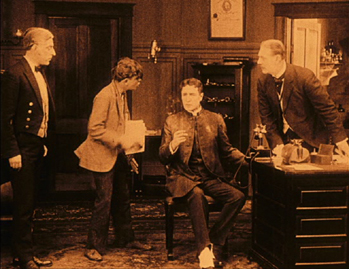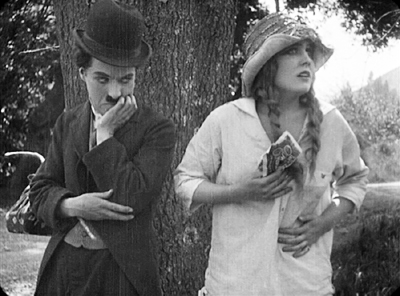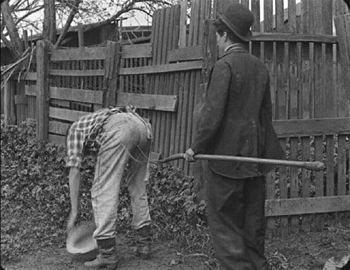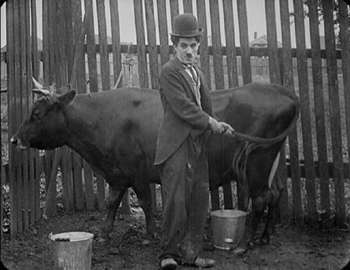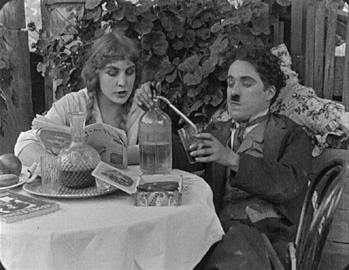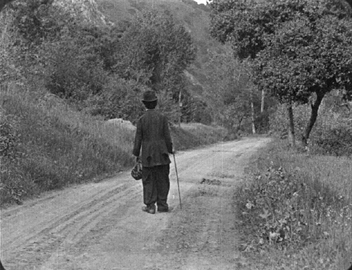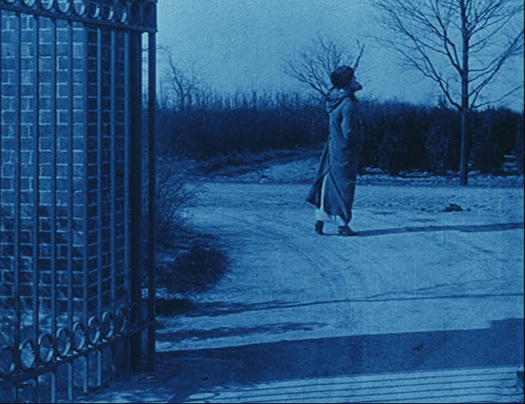Archive for the 'Directors: Chaplin' Category
The ten best films of … 1931
M (1931)
Kristin here:
Our regular readers know that this annual series began as a simple salute to 1917, the year in which the basic norms of the classical Hollywood cinema definitively gelled. Starting in 2008, it became the “The 10 best films of …” list. It has stood in for the year-end ten-best lists which critics and reviewers feel obligated to concoct but which we avoid.
1931, I think, was a slight improvement on the rather lackluster 1930. A small handful of filmmakers mastered the “talkies” and made movies that look and sound as if they could have been made years later. These are the first four films below. It was a little harder to fill in the list beyond them. It’s is full of familiar classics, with a film or two that will probably unknown to many. I always try to include at least one worthy out-of-the-way title.
Previous entries can be found here: 1917, 1918, 1919, 1920, 1921, 1922, 1923, 1924, 1925, 1926, 1927, 1928, 1929, and 1930
M
I remember seeing M as a grad student, or maybe even an undergraduate, and being horribly disappointed. This was a masterpiece? Actually it was only a semblance of one. In the 1970s a poor, incomplete 16mm print with as sparse a set of subtitles as I think I’ve ever seen was in circulation. The wit and brilliance of Fritz Lang’s sound links and voiceovers were largely lost, as were the sharp images now evident in the restored version. Even restored, as the introductory titles tell us, it is missing 212 meters. Fortunately that’s only .4% of the total, and the narrative progression is so smooth and absorbing that it’s hard to imagine that anything could be missing.
The story concerns a child-murderer terrorizing a city and the parallel searches for him by the police and by the organized underworld, the activities of which are being hindered by constant police searches and raids. At one point Lang famously intercuts a meeting of city officials with one of a group of gangsters. Parallels are created by matched gestures between space but also by one line being started by a character at one meeting and picked up by one at the other. Lang races through exposition by having the voiceover of a phone conversation between officials continuing over shots of the investigation in various spaces.
He uses sonic motifs as well. The killer compulsively whistled a Grieg tune as he lures his victims, but whistles come back time and again. Police whistles signal the raid on a basement tavern, and the beggars who tail their suspect signal each other with whistles–heard by the killer, who flees into an empty office building and ends up trapped there (top).
There’s a lot of offscreen sound in this film. The raid on the tavern cuts around to various parts of the space, as when we briefly follow a crook who tries to sneak out (above) while the protests of the crowd and the whistles and shouts of the police are heard off. One might think that all this is to avoid having to lip-sync the sound with the characters speaking–but when he does show the speaker, the sync is perfect. It’s another instance, I think, of Lang using sound to cram a lot of action or information into a short stretch of time. The thwarted crook is just a bit of comic relief, something Lang injects at intervals into this grim narrative.
Back in 2012, when I participated in Sight & Sound‘s poll of critics and academics for the ten best films of all time, I put M on the list. Counting 2021, it is the third film from that list that I have included in this one: The General in 2016, The Passion of Joan of Arc in 2018, and now M. The next one won’t show up for eight years (hint: Renoir made it in 1939), assuming I’m still doing this list at that point.
If you’ve never seen M, make sure you don’t watch an older print! The restored version is on Blu-ray from The Criterion Collection in the US and Eureka! in the UK.
Le Million
René Clair made two film classics in 1931, À nous la liberté and Le Million. I find the latter a better film in that it’s more complex and lively. À nous la liberté, which focuses on only two characters who spend a stretch of the film apart, has a rather thin narrative. Le Million, on the other hand, involves a large cast of amusing characters and constantly bubbles with dances, chases, and farcical situations. Indeed, early on it cites the chase scenes of early cinema when police pursue the kindly thief, Père Tulip, over the rooftops.
The sets were created by the great French film designer, Lazare Meerson (who also did the more austere sets of À nous la liberté). The interiors often have soft, hazy backgrounds (top of this section) apparently done partly by painting and partly with real objects behind scrims. These give a stylized quality appropriate to a classic farce situation: the debt-ridden artist protagonist Michel frantically searches for a jacket holding a winning lottery ticket as the jacket goes from hand to hand. At one point crossing hallways permit two chases–the police after Tulip, the creditors after Michel–to pass through each other.
David and I taught Le Million in an introductory film class back in the 1970s. I hadn’t seen it since, but it lived up to my fond memories of it. As cheerful a film as one could find for what promises to be another year short on cheerfulness.
Le Million is available on DVD from The Criterion Collection. The description says that the lyrics are all translated here for the first time.
Arrowsmith
Early as it is, Arrowsmith is surely one of Fords’s great films of the 1930s. It’s an adaptation of Sinclair Lewis’ 1925 novel of the same name. (Lewis won a Pulitzer for it but refused to accept the award.) The plot centers around Martin Arrowsmith (Ronald Colman), who starts as a medical student eager to establish a reputation and help discover cures for various plagues. He marries a charmingly impertinent nurse Leora (Helen Hayes), who supports him in his efforts.
The style of the film is distinctly flashy in its lighting, depth shots, and set design. It looks like what we tend to think of as Wellesian–though many of these techniques could instead by dubbed Fordian.
There are dramatic chiaroscuro effects as when Arrowsmith arrives home one evening, discouraged, and Leora sympathizes with him. The figures are side-lit with illumination coming from the kitchen, and Arrowsmith becomes a silhouette once he sits down.
The depth shots are equally impressive. A spectacular high angle (top of this section) shows three levels of a ship’s interior, with Sondelius, a medical expert, shouting up to the captain that he has discovered bubonic plague onboard. A less flashy but highly intense shot shows Leora’s death from bubonic plague. The long take is filmed with what David terms “aperture framing,” with Leora placed far off-center and relatively far from the camera, framed in the arms of the foreground rocking chair. It’s the same chair in which she sat when she smoked a cigarette contaminated with one of her husband’s plague samples. It’s a brilliant way to emphasize that she dies alone, with the bright open door at the center of converging lines of the set stressing that her husband does not suddenly appear, as we might expect, to comfort her.
Other more casual uses of depth with prominent foregrounds include a shot of Arrowsmith exiting his laboratory with beakers, bottles, and other equipment dwarfing him (below right).
Note also the prominent ceiling on the sets in the image on the left above. The notion that Citizen Kane was the first Hollywood film to use ceilings on sets has long been discredited, and here’s a good example of why. In general, Richard Day’s art direction combines with the cinematography to create powerful images, as in the hallway of the McGurk Institute, where Arrowsmith gains a research post.
We know that Welles was influenced by Ford’s work, but he primarily stresses Stagecoach as a film he watched repeatedly before making Citizen Kane. Arrowsmith, however, actually looks more like Kane than Stagecoach does. Did Welles and/or Gregg Toland see it? Very likely at least one of them did. There seems to be no record of Welles having said he saw it, but in 1938 he wrote and performed the title role in a radio version of Arrowsmith that had Hayes repeating her role as Leora.
Moreover, Arrowsmith was produced by Samuel Goldwyn. In the late 1920s and early 1930s, Toland was making films there, including Eddie Cantor comedies (Whoopee!, 1930) and two crime dramas starring Colman (Bulldog Drummond, 1929, and Raffles, 1930). It seems implausible that he would not have seen Arrowsmith.
All this is not to say that Arrowsmith was the first film to play with depth and chiaroscuro. As David pointed out in a 2010 blog entry, such ideas were developing in Hollywood during the 1920s, and William Cameron Menzies in particular experimented with them. There David wrote, “The flashy depth compositions of the 1920s and 1930s were typically one-off effects, used to heighten a particular moment.” True enough, but I think Arrowsmith uses them more consistently.
So far Arrowsmith has not been released on Blu-ray, but the MGM DVD has surprisingly good visual quality for a film from this period. (Amazingly enough, you can still buy new VHS copies on Amazon.)
Kameradschaft
Like Clair, G. W. Pabst directed two classic films in 1931, Kameradschaft (“Comradeship”) and The Threepenny Opera. The former is a network narrative, cutting among several characters or small groups of characters as they react to a mine disaster.
The story is set in two villages on either side of a French-German border. Each is a mining town, exploiting what is actually the same rambling mine that has walls and bars in multiple tunnels marking the end of the German portion and the beginning of the French one. When escaping gas triggers a fire and ceiling collapses on the French side, two truckloads of German miners volunteer to go and help the rescue teams.
As the title suggests, the film stresses the theme of solidarity among the miners, though Pabst doesn’t paint an entirely rosy picture of this. The German miners coming off their shift argue about whether they should assist their French counterparts, and many declare that it’s none of their business. Pabst stages the debate in a visually interesting locale, the changing room where the mining outfits of the men are stored on ropes or wires up by the ceiling (above and below, left). The leader of the group which goes to help with the rescue is played by Ernst Busch, a well-known Communist actor-singer who was also in the original stage version of The Threepenny Opera and Pabst’s adaptation, as well as Slatan Dudow’s Kuhle Wampe (1932), from Brecht’s script. His presence as one of the main characters in the network plot–and the one who spurs others to volunteer as rescuers–helps give Kameradschaft a distinctly leftist tone.
As with many other films set in coal mines, the mine itself was an elaborate and convincing studio set (above right). One collapsing area of a mine looks much like another, but Pabst found ways to vary the action from scene to scene. Variety is added through a contrast in the main characters being followed. An old ex-miner sneaks into the mine to search for his grandson. Three German miners who didn’t go in the trucks to the French side decide to make a rescue effort on their own, breaking through the barred underground border to do so. They end up alongside the old miner and his grandson, trapped in the underground stable, where the presence of a placid but doomed horse adds a poignancy to the scene. At intervals the drama going on among the mothers, wives, and sweethearts of the French miners clustered at the gates is shown.
The weaving together of the various threads of action creates a strong sense of suspense. No one character can be singled out as the protagonist, the one who might be expected to survive. Some miners and rescuers escape, but there are many who die or suffer serious injuries.
Despite the emphasis on the comradeship of miner of both nationalities, the Germans definitely come off better. Their rescue team is well-equipped and efficient, while the French workers deal with problems like an elevator being out of commission. It probably would never have occurred to Pabst and the others involved to make a film where French miners help rescue German ones–and it probably would not have been greenlit by the production company if they had. On the level of the individual miners’ actions, however, the notion of working-class solidarity comes across.
Kameradschaft is available on DVD and Blu-ray from The Criterion Collection.
Tabu: A Story of the South Seas
Tabu was Murnau’s final film. (The opening scene of the hero fishing with his friends was shot by intended co-director Robert Flaherty, who soon quit due to disagreements with Murnau.) It deals with Matahi and Reri, who live a joyful life on unspoiled Bora Bora until an elderly man from a nearby island arrives and announces that the “Virgin sacred to our gods” has died, and Reri is to be her successor. Matahi rescues her, and the two flee to another island which has been colonized by the French. They have established a pearl fishery and hire local men to dive for pearls. Matahi proves expert at this, but not understanding what money is, he soon gets himself deep into debt by signing IOUs.
Rather than using Hollywood stars, Murnau cast local unprofessionals. As the credits announce, “only native-born South Sea islanders appear in this picture with a few half-castes and Chinese.”
The two leads are appealing characters, and the images take advantage of the unspoiled scenery of Bora Bora (below left). Floyd Crosby earned an Oscar for Tabu‘s cinematography.
Tabu is a far cry from Murnau’s German films, but Nosfertu‘s famous shot of the vampire’s ship sailing eerily into the frame from offscreen is echoed as a motif here (below right).
The original version released by Paramount was released on DVD by Milestone. A restoration of the original cut of the film is available on DVD and Blu-ray from Kino Classics in the US and Eureka! in the UK, both with numerous supplements. A helpful comparison of these versions is available here.
La Chienne
I think it is safe to say that most critics and historians consider La Chienne the film where Renoir’s distinctive traits as a director began to emerge. I have seen most of the early Renoirs, but long enough ago that I can’t make a comparison. It does seem to me, though, that it is quite different from his previous work.
Maurice Legrand, the protagonist played by Michel Simon, is the most Renoirian character. He is a mild-mannered accountant married to a termagant who nags him constantly and forces him to remove from their apartment the paintings and the equipment he uses for his hobby. This sets off the events which follow, as Legrand hangs the paintings in the apartment of a prostitute, Lulu, with whom he has fallen in love. Her pimp Dédé concocts a scheme to sell the paintings, which he passes off to a dealer as the product of an American painter named Clara Wood. Even when Lulu explains what happened to the paintings, Legrand is so besotted that he raises no objections.
Although “la chienne” of the title is clearly Lulu, it might refer to Adèle Legrand as well. “Chienne” is more-or-less the equivalent of the English “bitch,” meaning both a female dog and an obnoxious woman, which Adèle certainly is. In their first scene together, she berates Legrand at length, comparing him unfavorably with her first husband, whose portrait in military uniform looms over them (above). Legrand does not rebel but answers in quiet sarcastic comments and ultimately obeys her order about the paintings.
In French, “la chienne” has the additional meaning of a prostitute, clearly referring to Lulu. Legrand is trapped between a constantly angry wife and a prostitute skilled in behaving in a docile fashion, pretending, as she finally admits, to love him solely in order to maintain the flow of money from the paintings. This admission finally drives him to fight back, killing Lulu. He ends up as a jovial tramp, foreshadowing Simon’s later role as Boudu in what is arguably Renoir’s first true masterpiece.
Stylistically the film does not strongly resemble Renoir’s major films of the mid- to late 1930s. Still, the scene in which Dédé and his friend approach an art dealer in their first attempt to sell one of Legrand’s paintings consists of a longish take of nearly two minutes, with staging in depth (below) when the dealer returns from a search and a track-in to a closer framing for the negotiations. Also, the film starts as a puppet show, with puppets introducing the main characters, whose images are superimposed over the little stage (bottom). This looks far forward to his final film, The Little Theatre of Jean Renoir (1970).
La Chienne is available on Blu-ray and DVD from The Criterion Collection.
Tokyo Chorus
Last year Yasujiro Ozu made his first appearance on this list for That Night’s Wife. This year it’s Tokyo Chorus (or Chorus of Tokyo). With sound barely established in Japan, Ozu made this and several subsequent films silent.
As the Criterion Collection liner notes explain, Tokyo Chorus combines the three genres Ozu had worked in before: the student comedy, the salaryman film, and the domestic drama. The student comedy subject gets disposed of early on, with the first scene showing the a comically strict teacher scrutinizing his class, lined up military-style; the protagonist, Shinji, tries some mild defiance by being late and showing off (below left).
Soon he has graduated, though, and is working in an office where the employees are awaiting their year-end bonuses. Just as quickly, Shinji is fired for protesting when an elderly colleague is fired just before his retirement and pension payments.
The rest of the film seems like a practice piece for I Was Born, But … (1932) and other Ozu films involving bratty kids who make demands on their parents. In this case Shinji’s son insists that his father buy him a bicycle and pesters him until he finally gets it (above right). As in the later film, Shinji is humiliated by having to take a job helping his old teacher to publicize his curry cafe.
Ozu’s growing mastery of editing for comedy is shown off in the early scene when the office employees try to find out how big a bonus their colleagues have received. Shinji sneaks away to the restroom to open his envelope, pretending he has gone to use a urinal. A low-height shot shows another man coming in, with the swinging doors of the urinal area showing him only from the waist down. Shinji, just about to open his envelope, glances off and sees him. A reverse shot shows the colleague stopping and staring, clearly more interested in Shinji’s bonus than in using the urinals. Shinji gives up, pretends he is just there to relieve himself, and a final shot shows him departing still not knowing how big his bonus is.
By this point, Ozu has mastered balancing comedy and pathos, a mixture of tones that will reappear in many of his future masterpieces.
Tokyo Chorus is has been released on DVD, appropriately enough along with two of those future masterpieces, I Was Born, But … and Passing Fancy (1933), by The Criterion Collection.
City Lights
I must admit that I do not admire City Lights as much as The Gold Rush and The Circus, which featured in my ten-best lists of 1925 and 1928. I think it has some narrative problems.
For one thing, the blind flower seller as a love interest is pretty passive and doesn’t allow many opportunities for generating humor. In The Gold Rush, Chaplin had the inspiration to introduce a dream sequence about the dance-hall girls, including his beloved Georgia, coming to dinner with him. He then inserted his classic gag, the dance of the rolls. Much of the action in The Circus involves the heroine, as with the magic act into which the Tramp stumbles. The flower seller mainly generates pathos, right up to the ambiguous ending. (I have seen commentators take the ending as a clear indication of a budding romance between the pair, but I think we get no clear indication that her gratitude for the help the Tramp has provided will blossom into love.)
Chaplin needed to fill out the film with action beyond the few scenes involving the flower seller. Much of the action involves the Tramp’s on-again, off-again friendship with the eccentric millionaire, which is a weak premise to carry so much of the narrative. This character treats the Tramp as his closest buddy when drunk but then fails to recognize him when sober. This happens three separate times and gets a bit repetitious in a way not seen in other Chaplin films. The main contributions of the millionaire to the plot are to give the flower seller the impression that the Tramp who buys her flowers is a wealthy man and to give the Tramp the money for the flower seller’s eye-restoring treatment. The character of the millionaire does create some humorous bits, as when the pair eat spaghetti and the Tramp gets a curly streamer mixed in with his and keeps on eating it. I can’t help contrasting the millionaire with the Mack Swain character in The Gold Rush, whose interactions with the Tramp generate so many hilarious gags.
There are admittedly other funny scenes, especially early on, when the Tramp is discovered asleep on the lap of a statue being unveiled before a crowd or when he becomes a street cleaner to earn money for the flower seller and is immediately confronted with a group of horses and, as a topper, an elephant passes.
Later on in the film, though, the plot premise of earning money to help the flower seller have an operation to restore her sight generates one of the funniest scenes in all of Chaplin’s work. He agrees to participate in a fixed boxing match, with his opponent going easy on him and the two splitting the purse. The opponent is replaced by a tough guy who clearly has no intention of playing nice. The Tramp’s tactics to avoid being beaten up involve dancing around directly behind the referee at first (top of this section) and then, in a dazzling bit of choreography, the three figures move around the ring, changing places repeatedly so that the Tramp is sometimes behind the referee, sometimes behind his opponent, and so on. It is reminiscent of the scenes in the hall of mirrors as the Tramp is chased by a pickpocket and then by a policeman in The Circus, with the characters and their reflections dodging in and out of view.
Chaplin famously refused to allow spoken dialogue in his film, despite the fact that the transition to sound was well established in the USA by 1931. He restricted the track to music and sound effects, a tactic he carried over to Modern Times as late as 1936, though there the Tramp’s voice is heard for the first and last time singing a nonsense song. Chaplin retired his long-time character thereafter.
City Lights is available on DVD and Blu-ray from The Criterion Collection.
Odna (Alone)
When I was in graduate school, the only film by Grigori Kozintsev and Leonid Trauberg widely known outside the Soviet Union was their 1926 adaptation of The Cloak, which appeared in my best-ten list for that year. Then people discovered, to some extent, The New Babylon, which appeared in the entry for 1929. I suspect that few people have seen, or even heard of, their marvelous first sound film, Odna.
It was planned as a silent film, but delays permitted the use of sound technology to add a track to it. The main element of the track is Dimitri Shostakovich’s musical accompaniment. (He had also composed the musical accompaniment for The New Babylon.) The music comments on the action, often in a mocking way. Occasionally there are sound effects, and very occasionally, brief lines of dialogue, recorded and added after the filming.
The plot centers around a young teacher fresh out of school, Yelena Kuzmina (played by Yelena Kuzmina, who also played the protagonist of The New Babylon).
The first section of the film is played with an absurdly jolly exuberance. Yelena is engaged to a handsome young man, and a lively montage of shots shows her visions of the ideal life she plans to lead with him in Moscow, including window-shopping for expensive sets of dinner crockery, playing a musical duet at a cafe (below left), and teaching attentive children seated in neat rows in a well-equipped classroom (top of section). Shostakovich’s music is ridiculously cheerful, and a song about how beautiful life will be plays over a shot of Kuzmina’s fatuous grin (below right).
The tone switches abruptly as Kuzmina receives an assignment to a teaching post in a remote, mountainous primitive district of Siberia.
Devastated, she lodges a complaint, which seems likely to succeed. An elderly man in the office tells her that she’s right to try to change her assignment (below left). She erupts, “I’m going anyway!” This is one of the few post-dubbed lines.
Upon arrival in the Siberian district, she encounters a dead horse’s skin on display (below right); this returns as a motif to emphasize how primitive and in need of education the area is. At first the villagers react with indifference or antagonism, seeing no point in having their children go to school. Oddly enough, the local Soviet official is lazy and also indifferent, leaving her alone with no aid in convincing the villagers to accept her. (This negative depiction of the Soviet official later got the film banned, despite its considerable popularity upon its initial release.)
Apart from encouraging teachers to accept whatever school they were assigned to, the film has the anti-Kulak theme that was common in Soviet films about the countryside. (See the discussion of Eisenstein’s The General Line in the 1929 entry.) A wealthy local landowner has secretly sold off the sheep that technically belong in common to the villagers, whose main source of income is the wool. Kuzmina exposes the theft and helps the local people resist it, thus finally gaining their trust.
The next-to-last reel of the film, in which the landowner tries to kill Kuzmina, is missing. A restored version of the film accompanied by a reconstruction of the Shostakovich score was released on Dutch and German DVDs in 2007. (The frames here are from the Dutch DVD.) It includes a long series of intertitles describing action in the missing reel, drawn-out so as to match the length of the music, which does survive. As far as I can tell, these DVDs are no longer available. I am reluctant to recommend a version on YouTube, derived from the German DVD and superimposing English subtitles on German ones, on top of Russian intertitles. It does seem to be the only widely available way to see the film at this point, so for those who can put up with the clutter and the poor quality of the online version, it is here. A complete recording of the charming music is still available.
La Petite Lise (1930)
My tenth film is a holdover from last year. I consider Jean Grémillon’s La petite Lise a film worthy of the top-ten list, but when compiling last year’s list I somehow misremembered it as being from 1931. It just goes to show that one should double-check on such things.
Decades ago, I first saw La petite Lise in a 35mm print on an editing table at the Cinémathèque Royale de Belgique (now the Cinematek). I finally saw it on the big screen in 2015, when our UW Cinematheque ran a few Grémillon films in 35mm. Then-graduate student Jonah Horwitz provided the program notes.
Grémillon is best known outside France for the trio of films he made during World War II: Remorques (1941), Lumière d’été (1943), and La ciel est à vous (1944). Criterion has released a box set of all three as Jean Grémillon During the Occupation. Some of his other films are available on disc, as a search of the director’s name on Amazon.com or amazon.fr reveals (including some with English subtitles).
The simple plot involves Berthier, who is serving a long sentence in a prison in Cayenne for having killed his wife in a fit of jealousy. Heroic behavior on his part during a recent fire has led to an early release, and he expresses his desire to see his daughter, Lise, now grown up. All this sets us up to be sympathetic toward him, despite the fact that he is played by by Pierre Alcover, a large, rather sinister looking actor. (Best known to modern audiences, I suppose, as the corrupt banker in L’Herbier’s L’Argent.) Unbeknown to him, Lise has been working as a prostitute but has now ended that in anticipation of marrying André. The pair are in desperate need of obtaining 3,000 F within 48 hours to buy a small house.
Berthier’s reunion with Lise is joyful, and he manages to find a job with his old boss, who gives him a generous advance on his salary. Knowing nothing of this, Lise and André visit a Jewish pawnbroker who André believes has cheated him in the past. When he threatens the pawnbroker, a fight breaks out, and Lise accidentally kills the man. Berthier learns of her past and of the killing, and his great love for her leads him to turn himself in as the killer.
The story is quite touching, in large part because Alcover and Nadia Sibirskaïa (who played the younger girl in Menilmontant) convey the deep love between the pair.
Grémillon adds some unconventional touches which have little direct relation to the plot and are largely dependent on sound. These give the simple plot some variety.
The opening, for example, takes place in the Cayenne prison, with Berthier learning of his pardon from the warden. In the crowded dorm, he reveals to two fellow convicts that his good fortune makes it impossible for him to participate in a planned escape. He shows them a photograph of Lise as a child. Most of the extended dorm scene, however, consists of fairly tight shots of other men’s activities, all packed into the crowded room. The soundtrack, rather than catching scraps of dialogue, remains a loud babble of many men talking at once. These shots tell us us next to nothing about the narrative, beyond suggesting the grim conditions to which Berthier faces returning to at the end. It does, however, create an effective atmosphere of the prison as a backdrop to occasional shots of Berthier gazing at the photo of Lise.
Another example is a scene late in the film, when, having learned of the killing, Berthier goes looking for André. He tries to enter a nightclub, but it is too crowded. He stands watching with several others through the window as a Black dancer performs a lively number for a mixed Black and white audience. For a brief interval, the scene becomes a musical number, extending to the point where couples start dancing, with Berthier becoming quite peripheral to the action. The performer and dancers add nothing to the story, but the scene is delightful in itself.
These and other moments draw us away from the linear progression of the story and make La petite Lise one of those small, simple films that transcend their apparently modest nature–like those of Jean Epstein and Dimitri Kirsanoff.
La petite Lise remains difficult to see. It has never, as far as I know, been available on home video. Grémillon’s film is not on YouTube, but there are several clips from key scenes. (All are pretty poor in quality, and I haven’t seen a good print of it. If elements survive in archive, it seems a major candidate for restoration.) An excerpt from the scene in the prisoners’ dorm near the beginning gives a good sense of the babble of voices. The Black dancer’s number as Berthier searches for André is shown nearly in its entirety. Both of these were put up at the time of the Cinematheque screening in Madison. There are some other brief scenes: the visit to the pawnbroker leading up to the murder, the scene of Berthier applying to his former boss for a job (which includes a sound bridge from the previous scene of Lise at home), and the scene in a restaurant which Lise and André visit in the hope of establishing an alibi. Otherwise, keep an eye open for it if you live near at archive that has public screenings.
For a look at Ford’s flashy style in his earliest features, see here. For a defense of How Green Was My Valley‘s Oscar win over Citizen Kane for best picture, see here.
My video essay, “Mastering a New Medium: Sound in M“ is number 11 in the series “Observations on Film Art” on The Criterion Channel.
La Chienne (1931)
MONSIEUR VERDOUX: Lethal Lothario
DB here:
The newest installment of our Criterion Channel series on FilmStruck is now up. There I try to look at Chaplin’s Monsieur Verdoux (1947) from a fresh perspective: as a perverse contribution to the serial-killer cycle of the 1940s. You can sample it on the Criterion blog.
The killers inside them
When we say that we take up a new perspective on a film, or any artwork, what are we doing? I think the process involves at least two things. First, you need categories, some fresh conceptual groupings that allow for a perspective shift. Second, you relate the film in question to other particular films—that is, you pick prototypes of the categories. People don’t realize, I believe, the extent to which picking prototypes shapes our reasoning about nearly everything. (Is your prototype of a horror film Cat People, Halloween, or Saw? You’ll think of the genre differently.)
Take film noir. The category didn’t exist in 1940s Hollywood; no producer or director or writer set out to make a noir. A film might be a thriller, crime melodrama, even a horror movie. I discuss the elasticity of these categories here. When French, then American critics started talking about film noir, they were creating a perspective shift. The new category “film noir” pulled together several aspects of films that hadn’t seemed so salient in their day: skepticism about orthodox authority, for example, or suspicion of women’s sexuality. Similarly, the critics elevated certain films, like Double Indemnity and The Big Sleep and Possessed, to the status of prototypes, and less vivid examples were situated in relation to them.
Something like this perspective shift occurred to me when I was writing my book, Reinventing Hollywood: How 1940s Filmmakers Changed Movie Storytelling. I tried to come up with some categories that could show continuity and change in film narrative of the period. I looked for strategies of plotting and narration that cut across received categories like genre. Among the categories I explored are block construction, multiple-protagonist plots, subjective viewpoint, non-chronological story sequence, voice-over narration, and others. Some had come to be associated with certain genres (thanks again to prototypes), but I found that they were quite pervasive. Several of these I’ve tried out on the blog.
Once I was peering through the lenses of these categories, my prototypes changed too. Now little-discussed films like Our Town (1940) and Tales of Manhattan (1942) and The Human Comedy (1943) and The Chase (1946) became surprisingly central. I couldn’t ignore the classics, but they were now lit by a crosslight that brought out fresh aspects. And with these categories of narrative technique in mind, we can discover some new sides of well-known auteurs, like Welles, Hitchcock, Sturges, and Mankiewicz.
One broader category I tried out was that of “murder culture.” Mystery and suspense are perennial narrative appeals, but they took on new power in in fiction, film, and theatre of the Forties. (An early version of the chapter’s case is made here.) Part of murder culture was the rise of the serial-killer tale—not new in the 1940s, of course, but more common than in earlier Hollywood eras. Films like Shadow of a Doubt (1943), The Lodger (1944), Bluebeard (1944), Hangover Square (1945), Lured (1947), Follow Me Quietly (1949), and others became prototypes for my purposes.
Then Monsieur Verdoux appeared in a new light. What better evidence of the pervasiveness of murder culture than the effort by the most-loved film star in history to play a serial killer?
Landru in LA
Orson Welles and Charles Chaplin, Brown Derby restaurant, March 1947.
It was Orson Welles who prompted Chaplin to make Monsieur Verdoux. Welles was a thriller fan. He carried a trunkload of crime novels around on his travels. One of his early RKO projects was an adaptation of Nicholas Blake’s Smiler with a Knife, and after the debacle of It’s All True, his work as a freelance director consisted of thrillers (The Stranger, The Lady from Shanghai, Mr. Arkadin) and Shakespeare adaptations (Macbeth, Othello). Indeed, he treated Shakespeare’s plots as thrillers, in accord with his belief that the Bard wrote not classical tragedies but blood-and-thunder melodramas.
According to biographers, Welles wrote a screenplay based on the wife-murderer Landru and offered the role to Chaplin. Chaplin at first accepted, then decided to direct the film himself and bought the idea from Welles. There was apparently some dispute about giving Welles credit; early prints are said to have lacked acknowledgment of Welles’ idea as the source.
By late 1941, the trade press reported that Chaplin was preparing the film, then called “Lady Killer.” A year later, it was still discussed as a “plan.” Chaplin didn’t finish the screenplay until 1946, and the film was shot between May and September. By then it was entitled “A Comedy of Murders,” although Chaplin toyed with “Bluebeard” and “Bluebeard Rhapsody.” It wasn’t released until spring of 1947.
This long gestation period is significant because when Chaplin started, the idea of a comedy about killing would have been fairly fresh. By the time Verdoux was released, however, Arsenic and Old Lace (1944) and Murder, He Says (1945) had already shown that audiences would accept humor mixed with homicide. The original stage production of Arsenic and Old Lace had opened to great success in January of 1941, and it’s interesting to speculate that it might have encouraged Chaplin to buy Welles’ Landru idea.
Both Arsenic and Murder, He Says treat murder with a consistently farcical tone. I suggest in my FilmStruck Observations episode that Chaplin risks something more complex. For one thing, he takes the conventions of the serial-killer film more seriously than the other films do. He goes on to amplify and exaggerate those conventions in fascinating ways. For instance, he makes the policemen more or less stick figures, so we don’t care if they’re in jeopardy. In turn, Verdoux tries to win our allegiance through clumsy efforts to be debonair. (Uncle Charlie in Shadow of a Doubt is far more poised.) Chaplin’s use of the cycle’s conventions gets pretty specific. There were dead narrators in 40s films before Sunset Blvd. (1950), but we tend to forget that Chaplin uses the same device in Verdoux.
Going further, I discuss how Chaplin’s treatment of serial killing mixes different sorts of comedy—social satire and slapstick, the traditional comedy of manners and the comedy of ideas associated with George Bernard Shaw. This mix is rather discordant, and it’s responsible, I think, for much of the criticism the film attracted, then and now.
The Tramp as provocateur
Verdoux failed in the US for several reasons. Reviews were mostly unsympathetic, even harsh. Chaplin had been back in the headlines thanks to a messy paternity suit filed by Joan Barry. His reputation as a seducer of young women had unpleasant associations with Verdoux’s conquests. He was also known for his support for liberal causes and his strong stance against fascism. After the war, he was more and more reviled by right-wing politicians and activists. Chaplin’s defense of civil liberties made him seem too much a Communist dupe, or an active sympathizer. Charles Maland has suggested that the film’s promotion completely mishandled Chaplin’s star image.
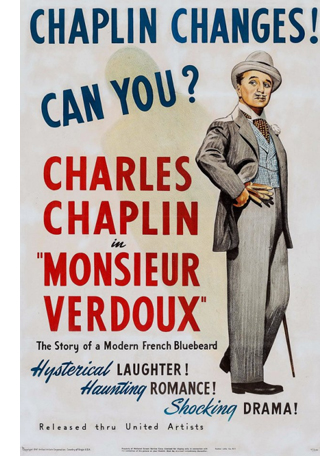 The disgraceful New York press conference on the film was chronicled in the New Republic:
The disgraceful New York press conference on the film was chronicled in the New Republic:
He couldn’t have expected the shockingly rude, sustained impertinence of the attack that followed. Reporters were there, not to discuss his work with him, but to discredit and vilify and ridicule him personally—to hound him on his own opinions and habits. Was it true that one of his good friends (I am omitting names), a great musician, was a radical? Did this mean that he, Chaplin, condoned treason to this country, since his friend’s brother was accused of being a spy? Was Chaplin a Communist? Why, then, had he shown so little regard for the United States that, although he had paid taxes here for years, he was still a British subject? Even though two of his sons fought for this country in the war, and he did war work himself, why didn’t he do more? Exactly what percentage of his vast income made in the US had gone to alleviate the suffering of humanity?
While two perambulating mikes broadcast these questions and others, a swarm of cameramen set off lights in Chaplin’s face, so that in an hour he was not only knee-deep in spent flash bulbs, but practically blinded. His patience and courtesy were astounding, since his disgust must have at least compared to that of the few of us who could only be ashamed of what ugly, hostile liberties can be taken in the name of the freedom of the press.
The final scenes of Verdoux only heightened the suspicion that Chaplin was a danger to patriotic values. Soon he was subpoenaed by the House Unamerican Activities Committee, though he never testified. In 1952, after he and his new wife Oona left for Europe, his re-entry permit was rescinded. He went into exile in Switzerland.
The reviewers’ most common complaint was that the film refused to jell, but the film had eloquent defenders and brought forth some of the subtlest critical commentary of the period. James Agee, the only person to defend Chaplin during the press conference, wrote a famous three-part appeciation of the film that, I think, represents an early instance of in-depth film interpretation. Theatre historian Eric Bentley argued against those who found the movie a jumble of sentiment and slapstick. It was, he claimed, in the vein of Pirandello, where comedy gives way to the more philosophical mode, that of humor.
Reflection turns the merely funny into humor. . . . Thus, Pirandello argues, humor breaks up the normal form by interruption, interpolation, digression, and decomposition; and the critics complain of lack of unity in all humorous works from Don Quixote to Tristram Shandy—and we might add from Little Dorrit to Monsieur Verdoux.
Going still wilder, Parker Tyler speculated that in a parallel universe, Verdoux wasn’t executed. He abandoned his wife and son and took off on the road. Charlie the Tramp “had a past like anyone else. . . . Verdoux is . . . how Charlie came to be.”
Tyler’s flight of fancy isn’t surprising. This film can drive you a little nuts. It’s not ingratiating. It’s less perfect than provocative. It’s like the name itself, ver-doux, which translates as “sweet worm” or “gentle worm”—a little pleasant and a little creepy. The film is an obstinate thing that insists on being its contradictory self, not what you want it to be. For me, it’s perversely unlovable, and that unlovability is part of the Chaplin myth too. We should remember that the earliest Chaplin films show the Tramp as fairly nasty.
I suspect that Monsieur Verdoux can’t become a prototype; it flouts too many cherished categories. Or maybe the best category for it is that of experimental Hollywood movie. After all, the 1940s furnished more than its share of them.
Thanks as usual to Kim Hendrickson, Grant Delin, and Peter Becker of Criterion. Our complete Observations on Film Art Criterion series is here. (I think you need to be logged in to see it.)
Welles discusses Shakespeare as blood-and-thunder melodramatist in This Is Orson Welles (HarperCollins, 1992), 217, and in a little more detail, in audiocassette number 4 accompanying the book, side A, 18:37. I draw my information about the preparation of Verdoux from Frank Brady, Citizen Welles (Scribners, 1989), 416-417; “Chaplin Announces Bluebeard Film,” Motion Picture Herald (29 November 1941); and Glenn Mitchell, The Chaplin Encyclopedia (Batsford, 1997), 191-198. Charles Maland’s reflections on Verdoux‘s promotional problems are in Chaplin and American Culture: The Evolution of a Star Image (Princeton, 1989), 250-251. The coverage of the Monsieur Verdoux press conference is by Shirley O’Hara in “Chaplin and Hemingway,” New Republic (15 May 1947), 39. Bentley’s 1948 essay is “Monsieur Verdoux and Theater,” In Search of Theater (Vintage, 1953), 154.
I’ve argued in The Rhapsodes that Agee’s critique displays the interpretive techniques borrowed from literary New Criticism. In the same book I discuss Tyler’s Chaplin book as an ultimate flight of performative criticism. One consequence of 1940s murder culture was the crystallization of the suspense thriller, a genre that has flourished ever since, for several reasons.
There’s more on my forthcoming book on the 1940s here.
Monsieur Verdoux.
The ten best films of … 1925
The Big Parade (1925).
Kristin here:
As all about us in the blogosphere are listing their top ten films for 2015, we do the same for ninety years ago. Our eighth edition of this surprisingly popular series reaches 1925, when some of the major classics of world cinema appeared. Soviet Montage cinema got its real start with not one but two releases by one of the greatest of all directors, Sergei Eisenstein. Ernst Lubitsch made what is arguably his finest silent film. Charles Chaplin created his most beloved feature. Scandinavian cinema was in decline, having lost its most important directors to Hollywood, but Carl Dreyer made one of his most powerful silents.
For previous entries, see here: 1917, 1918, 1919, 1920, 1921, 1922, 1923, and 1924.
The lingering traces of Expressionism vs the New Objectivity
The Joyless Street (1925).
Last year I suggested that German Expressionism was winding down in 1924. It continued to do so in 1925. Indeed, no Expressionist films as such came out that year. What I would consider to be the last films in the movement, Murnau’s Faust and Lang’s Metropolis, both went over budget and over schedule, with Faust appearing in 1926 and Metropolis at the beginning of 1927.
Murnau made a more modest film that premiered in Vienna in late 1925, Tartuffe, a loose adaptation of the Molière play. The script adds a frame story in which an old man’s housekeeper plots to swindle and murder him. The man’s grandson disguises himself as a traveling film exhibitor and shows the pair a simplified version of the play, emphasizing the parallels between the hypocritical Tartuffe and the scheming housekeeper.
The film has some touches of Expressionism but cannot really be considered a full-fledged member of that movement. The lingering Expressionism is not surprising, considering that some of the talent involved had worked on Robert Wiene’s Das Cabinet des Dr.Caligari: screenwriter Carl Mayer, designers Walter Röhrig and Robert Herlth, and actors Werner Krauss and Lil Dagover.
The visuals include characteristically Expressionist moments when the actors and settings are juxtaposed to create strongly pictorial compositions. These might be comic, as when the pompous Tartuffe strides past a squat lamp that seems to mock him, or beautifully abstract, as when Orgon is seen in a high angle against a stairway that swirls around him:
A restored version is available in the USA from Kino and in the UK in Eureka!‘s Masters of Cinema series. (DVD Beaver compares the two versions.) The restoration was prepared from the only surviving print, the American release version; it runs about one hour.
The other German film on this year’s list, G. W. Pabst’s The Joyless Street, contrasts considerably with Tartuffe. It was arguably the first major film of the Neue Sachlichkeit or New Objectivity trends in German cinema. I have already dealt with it in a DVD review entry shortly after its 2012 release. The restoration incorporated a good deal more footage than had been seen in previous modern prints, but it remains incomplete.
Once more the comic greats
The Gold Rush (1925).
For several years now these year-end lists have mentioned Charles Chaplin, Buster Keaton, and Harold Lloyd, in various combinations. Early on it would was Chaplin alone (Easy Street and The Immigrant for 1917) or Lloyd and Keaton alone (High and Dizzy and Neighbors for 1920). In a way most of these films were placeholders, signalling that these three were working up to the silent features that were among the most glorious products of the Hollywood studios in the 1920s. In our 1923 list, each found a place with a masterpiece: Chaplin’s A Woman of Paris, Keaton’s Our Hospitality, and Lloyd’s Safety Last.
This year we may surprise some by giving Lloyd a miss. For years The Freshman was thought of as his main claim to fame, perhaps alongside Safety Last. I think this was largely because The Freshman was the one of the few Lloyd films that was relatively easy to see. (Perhaps also because Preston Sturges dubbed it an official classic by making a sequel to it (The Sin of Harold Diddlebock, aka Mad Wednesday, 1947.) Now that we have the full set of Lloyd’s silent features available, it emerges as a rather tame entry compared to Safety Last, Girl Shy, or our already-determined entries for 1926, For Heaven’s Sake, and 1927, The Kid Brother. Let’s just call The Freshman a runner up.
Keaton’s Seven Chances takes one of the most familiar of melodramatic premises and literally runs with it. James Shannon discovers from his lawyer than he stands to inherit a great deal of money if he is married by 7 pm on his 27th birthday–which happens to be the day when he receives this news. A misunderstanding with the woman he loves leads to a split, and in order to save himself and his partner from bankruptcy, Shannon determines to marry any woman who will volunteer in time. Hundreds turn up.
The result is another of the extended, intricate chase sequences that tend to grace Lloyd’s and Keaton’s features, and to a lesser extent Chaplin’s. In fact Seven Chances has a double chase. The first and longer part involves a huge crowd of women gradually assembling behind Shannon as he unwittingly walks along the street. This accelerates and keeps building, exploiting various situations and locales, as when the chase passes through a rail yard and Shannon escapes by dangling from a rolling crane above the women’s heads. Eventually the action moves into the countryside, where the brides temporarily disappear, taking a short cut to cut Shannon off, and he ends up in the middle of a gradually growing avalanche.
Seven Chances is available on Blu-ray and DVD from Kino.
Of all the films on this year’s list, Chaplin’s The Gold Rush is probably the most widely familiar. The Little Tramp character, here known only as a “Lone Prospector,” blends hilarity with pathos in a fashion that is actually typical of relatively few of the director/performer’s films overall. It is, however, how many people think of him.
The Gold Rush looks rather old-fashioned compared with Seven Chances. Although the opening extreme long shots of an endless line of prospectors struggling up over a mountain pass are impressive, much of the action takes place in studio sets, sometimes standing in for alpine locations. Both the cabins, Black Larsen’s and Hank Curtis’, are like little proscenium stages, with the action captured from the front. Yet the film depends on its brilliant succession of gags and on the Prospector’s status as the underdog who is also the resilient and eternal optimist.
The best bits of humor arise from Chaplin’s ability to create funny but lyrical moments by transforming objects metaphorically. Given the plot, some of the best-known gags arise from meals. One is the dance of the rolls, part of a fantasy sequence in which the Prospector dreams of entertaining a group of beautiful women at dinner (above), when in fact the women stand him up. Trapped by a storm in a remote cabin, the Prospector and his partner cook one of his shoes. He serves it on a platter and carefully “carves it, with the leather becoming the meat, the nails bones, and the laces spaghetti.
Many home-video versions of The Gold Rush have been released, but the definitive restoration of the 1925 version is available from the Criterion Collection.
The Golden Age in full swing
Lazybones (1925).
When people speak of the “Golden Age” of the Hollywood studio system, they usually seem to mean the 1930s and 1940s (and the lingering effects of the system in the 1950s). A look at Hollywood films of the 1920s shows that it was already functioning at full steam. Three features of 1925 display the utter mastery of continuity storytelling and style and a sophistication that matches films of subsequent decades.
Lady Windermere’s Fan may be the best silent made by Ernst Lubitsch, who has appeared on these lists before. It arguably ranks alongside Trouble in Paradise and The Shop around the Corner as one of the best films of his entire career. It’s a loose adaptation of the Oscar Wilde play, but it’s pure Lubitsch throughout.
Anyone who thinks that the classical Hollywood system was merely a set of conventions that allowed films to be cranked out with minimal originality could learn a lot from Lady Windermere’s Fan. Its completely correct use of continuity editing, three-point lighting, and the like does not preclude imaginative touches and methods of handling whole scenes. There’s the sequence when Lord Windermere visits the mysteriously shady lady Mrs. Erlynne in her drawing-room. The camera is planted in the center of the action, with frequents cuts as the two characters move in and out of the frame and even cross behind the camera. There’s not a hint of a mismatched glance or entrance across this complex and unusual series of shots. There’s the racetrack scene, as everyone present watches and gossips about Mrs Erlynne in a virtuoso string of point-of-view shots.
The racetrack scene ends with a wealthy bachelor following Mrs Erlynne out of the track. The camera moves left to follow her, keeping her in the same spot in the frame. As the man gradually catches up, Lubitsch uses a moving matte to hint at their meeting without showing it or cutting in toward the action.
A good-quality transfer of Lady Windermere’s Fan is only available on DVD as part of the More Treasures from American Film Archives 1894-1931. (Beware the copy offered by Synergy, which according to comments on Amazon.com is from a poor-quality, incomplete print.)
The one title on this list whose inclusion might surprise readers is Frank Borzage’s Lazybones. I remember being bowled over by this film during the 1992 Le Gionate del Cinema Muto festival in Pordenone, which included a Borzage retrospective. I found the more famous Humoresque (1920) a disappointment, but Lazybones was a revelation. This is another case of a film that was simply unknown when film historians started writing about the Hollywood studio era. It was not discovered until 1970, when it was found in the 20th Century-Fox archives. As a result, Lazybones was, as Swiss film historian Hervé Dumont put it in his magisterial book on the director, “revealed as the most poignant–and the most accomplished–of Borzage’s works before Seventh Heaven.”
Year by year since we started this annual list, I looked forward to recommending Lazybones, and now we arrive there. I rewatched it for the first time to see if it really deserved to make one of the top ten. The answer is yes. For me, this is as good as 7th Heaven, or as near as makes no difference.
It’s difficult to describe the plot of Lazybones, since it doesn’t have much of one. Steve (played by the amiable Buck Jones) is a very lazy young man living in a rural village. He has a girlfriend, Agnes, whose mother scorns him. The girlfriend has a sister, Ruth, who returns home with a baby in tow. In despair, Ruth leaves the baby on a riverbank and tries to drown herself (image at top of section). Steve rescues her, and she explains that unknown to her family, while she was away she married a sailor who subsequently went down with his ship. She has no proof of this and knows her tyrannical mother will assume that the baby is illegitimate. Steve decides to keep her secret and adopt the apparent foundling himself.
All this happens during the initial setup. Then the little girl, Kit, grows up into a young lady. Along the way, not all that much happens. Steve, lacking any goals, stays lazy, which sets him apart from the energetic, ambitious protagonists of most Hollywood films. Kit is shunned by her classmates and the townspeople, and Steve tries to shelter her from all this. He loves Agnes but quickly loses her to a richer, more respectable man. He goes off to fight in World War I, becomes an accidental hero, and returns home after perhaps the shortest battlefront scene in any feature of the period. Kit finds a boyfriend.
What makes all this riveting viewing is its mixture of quiet comedy and poignancy. Steve is so amiably and unrepentantly loath to work that he is scorned by nearly everyone, and yet he commits an act of great kindness for which he gets no credit at all, except from his devoted mother. It is clear that these snobbish townspeople would scorn him even if they knew how he has kept Kit out of the orphanage and made a happy life for her.
The film is beautifully shot, and Borzage displays such an easy mastery of constructing a scene, particularly in depth, that it is easy to miss the underlying sophistication. Early on, Agnes and her mother arrive at Steve’s house. As Agnes waits outside the fence in the foreground, Steve tips his hat to her, in the foreground with his back to the camera. The mother passes by him toward the house, her mouth fixed in a sneer. We may think that Steve is oblivious to this, but once she passes out of the frame in the foreground, he puts his hat back on and slips it down over his face rather cheekily as he glances at her, his gesture suggesting his indifference to her opinion of him. (Note also the subtle touch of his lazily fastened suspenders.)
Borzage has mastered the use of motifs that are so characteristic of Hollywood cinema. There’s a running gag about the dilapidated gate of the picket fence around Steve’s and his mother’s house, with each person remarking “Darn that gate!” as they struggle through it. The repetition becomes cumulatively funnier because about two decades pass in the course of the film without the thing being fixed. The acting, particularly of Buck Jones and Zasu Pitts (as Ruth), is affecting.
It’s difficult to convey the charms of such an unconventional film, but give it a try and you may be bowled over, too.
A superb DVD transfer of Lazybones was included in the lavish Murnau, Borzage and Fox box (2008). The 20th Century-Fox Cinema Archives series offers it separately as a print-on-demand DVD-R. I’ve not seen it but suspect that there would be some loss of quality in this format. Besides, every serious lover of cinema should have that big black box sitting on their shelves next to the Ford at Fox one.
Returning to the more familiar classics, my final Hollywood film of the year is King Vidor’s The Big Parade.
Apart from its success and influence, however, The Big Parade remains an entertaining, funny, and moving film. Vidor’s scenes often run a remarkably long time, suggesting the rhythms of everyday life. One such action involves James fetching a barrel back to where he and his mates are staying so that he can turn it into an outdoor shower. When nearly back, he encounters Melisande, whom he initially can’t see. His stumbling about and her increasing laughter at his antics are played out at length (see top), as is a supposedly improvised scene shortly thereafter where James tries to teach Melisande how to chew gum.
A very different sort of prolonged scene is the long march of James and his comrades through a forest full of German snipers in trees and machine-gunners in nests. They begin by walking through an idyllic-looking forest, then increasingly encounter fallen comrades, and finally reach the Germans.
For years the prints of The Big Parade available were less than optimum, with some based on the 1931 re-release version, where the left side of the image had to be cropped to make room for the soundtrack. A 35mm negative was discovered relatively recently, however, and is the basis for the superb DVD and Blu-ray versions released in 2013.
Finally, I turn you over to David for some comments on films that fall within his specialties.
Eisenstein, action director
Watch this. Maybe a few times.
These two seconds, violent in both what they show and the way they show it, seem to me a turning point in film history. Here extreme action meets extreme technique. The spasms of the woman’s head, given in brief jump cuts (7 frames/5/8/10), create a sort of pictorial fusillade before we get the real thing: a line of riflemen robotically advancing into a crowd.
It’s not usually recognized how often changes in film art are driven by showing violence. Griffith’s last-minute rescues usually take place in scenes of massive bloodshed; not only The Birth of a Nation but the equally inventive Battle at Elderbush Gulch use rapid crosscutting to treat a boiling burst of action. The Friendless One’s pistol attack in Intolerance is rendered in flash frames that Sam Fuller might approve of. Later, the Hollywood Western, the Japanese swordplay film, the 1940s crime melodrama, the Hong Kong action picture, and many other genres pushed the stylistic envelope in scenes of violence. Hitchcock’s vaunted technical polish often depended on shock and bloodletting, from a bullet to the face (Foreign Correspondent) to stabbing in the shower (Psycho). The free-fire zone of Bonnie and Clyde and Peckinpah’s Westerns took up the slow-motion choreography of death pioneered by Kurosawa. Extreme action seems to call for aggressive technique, and intense action scenes can become clipbait and film-school models.
Sergei Eisenstein is celebrated as the theorist and practitioner of montage, whatever that is; but he insisted that what he called expressive movement was no less important. Just as montage for him came to mean the forceful juxtaposition of virtually any two stimuli (frames, shots, elements inside shots, musical motifs), so he thought that expressive movement ranged from a haughty tsar stretching his stork neck (Ivan the Terrible) to peons buried up to their shoulders, squirming to avoid horses’ hooves (Que viva Mexico!). In Eisenstein, psychology is always externalized, crowds move as gigantic organisms, and any action can turn brutal. (I fight the temptation to call him S & M Eisenstein.) We can trace influences—Constructivist theatre, the chase comedies coming from America, his interest in kabuki performance—but when he moved into cinema from the stage, Eisenstein became an action director, in a wholly modern sense.
Eisenstein’s first two features bracket the year 1925. Strike was premiered in January, The Battleship Potemkin in December. The first was apparently not widely seen outside Russia until the 1970s, but the second quickly won praise around the world. Potemkin’s centerpiece, the Odessa Steps sequence, became an instant critical chestnut, proof that cinema had achieved maturity as an art. Owing nothing to theatre, this massive spectacle was as pure a piece of filmmaking as a Fairbanks stunt or a Hart shootout. But of course Eisenstein went farther.
The Steps sequence was probably the most violent thing that anybody had ever seen in a movie. A line of soldiers stalks down the crowded staircase. A little boy is shot; after he falls, skull bloodied, his body is trampled by people fleeing the troops. Another man falls, caught in a handheld shot. A mother is blasted in the gut, and her baby carriage, jouncing down the steps, falls under a cossack’s sword. A schoolmistress who has been watching in horror gets a bullet in the eye–or is it a saber slash? The sequence ends as abstractly as it began, if “abstractly” can sum up the horrific punch of these images.
The film is much more than this sequence, of course, but every one of its five sections arcs toward violence, and each payoff is shot and cut with punitive force. The mutiny itself is a pulsating rush of stunts, unexpected angles, and cuts that are at once harsh and smooth. The whole thing starts with a rebellious sailor smashing a plate (in inconsistently matched shots) and ends with the ship confronting the fleet, a challenge rendered by percussive treatment of the men and their machines.
In Strike, Eisenstein rehearsed his poetry of massacre, along with a lot of other things. Instead of rendering an actual incident, as in Potemkin, here he portrays the typical phases any strike can go through. The plot starts with injustices on the shop floor, escalates to a walkout, and then—of course—turns violent, as provocateurs make a peaceful demonstration into a pretext for harsh reprisals. Throughout, Eisenstein experiments with grotesque satire and caricature. The workers are down-to-earth heroic; the capitalists are straight out of propaganda cartoons; the spies are beastly, the provocateurs are clowns. Every sequence tries something new and bold, and weird.
The most famous passage, well-known from his writings if not from actual viewing, is the climax. Here a raid upon workers in their tenements is intercut with the slaughter of a bull. Montage again, of course, but what isn’t usually noticed is the remarkable staging of that police riot, with horsemen riding along catwalks and fastidiously dropping children over the railings. For my money, more impressive than this finale is the earlier episode in which firemen turn their hoses on the workers’ demonstration. The workers scatter, pursued by the blasts of water, until they are scrambling over one another and pounded against alley walls. This is Strike’s Odessa Steps sequence, and for throbbing dynamism and pictorial expressiveness–you can feel the soaking thrust of the water–it has few equals in silent film.
For Eisenstein, the bobbing, screaming head in my clip was the “blasting cap” that launched the Odessa massacre. Is the woman the first victim of the troops, or is her rag-doll convulsion a kind of abstract prophecy of the brutality to come? Yanked out of the actual space of the action, it hits us with a perceptual force that goes beyond straightforward storytelling. Kinetic aggression, making you feel the blow, is one legitimate function of cinema. Eisenstein is our first master of in-your-face filmmaking.
After many tries, archives have given us superb video editions of Potemkin and Strike, both available from Kino Lorber. Potemkin’s original score captures the film’s combustible restlessness. Strike seems to have been shot at so many different frame rates that it’s hard to smooth out, but the new disc makes a very good try, and it’s far superior to the draggy Soviet step-printed version that plagued us for decades.
Chamber cinema
Every so often a filmmaker decides to accept severe spatial constraints, creating what David Koepp calls “bottle” plots. Make a movie in a lifeboat (Lifeboat) or around a phone booth (Phone Booth) or in a motel room (Tape) or in a Manhattan house (Panic Room) or in a remote cabin plagued by horrors (name your favorite). In the 1940s several filmmakers were trying out a “theatrical” approach that welcomed confinement like this; Cocteau’s Les Parents terribles, H. C. Potter’s The Time of Your Life, and of course Rope are examples. Today’s filmmakers are still exploring “chamber cinema.” The Hateful Eight is the most recent instance, with most of its chapters set in Minnie’s Haberdashery.
Typically, the chamber films in any period aren’t “canned theatre” like the PBS or English National Theatre broadcasts. Chamber films push the camera into the space, often showing all four walls and letting us get familiar with the rooms the characters inhabit. But this requires not only a carefully planned setting but also a good deal of cinematic skill in smoothly taking us to the primary zones of action.
Carl Dreyer was one of the earliest exponents of chamber cinema. He had seen initial examples in German Kammerspiel (chamber-play) films like Sylvester (1924) and had made a mild version himself in Michael (1924). Dreyer took the aesthetic to new heights in The Master of the House (1925).
Long before Akerman’s Jeanne Dielmann, Dreyer gave us a film about housework. Ida’s husband Victor is unemployed, so while he loafs and drifts around town, she struggles to keep things going. He pays her back with scorn and abuse. The plot is structured around two days, which yield a before-and-after pattern. At the end of the first, Ida leaves Victor, and a month later, his realization of his mistakes is revealed by his behavior in the household. The drama comes not only from the characters’ conflicts but from the way they handle everyday things like butter knives and laundry lines.
Rendering the household in all its specificity obliges Dreyer to rethink continuity filmmaking. He lays out the geography of the home by shooting “in the round” and cutting on the basis of eyelines and frame entrances. (He displays the same confidence in the “immersive camera” that Lubitsch displays in Lady Windermere’s Fan.) He trains us to notice landmarks, to associate bits of action with particular areas of the apartment, and to sense the characters’ changing emotions in relation to small adjustments in composition. The film is an exceptionally fluid, assured one, and it prepares for more daring Dreyer experiments to come: the fragmented interior spaces of La Passion de Jeanne d’Arc, the creeping camera of Vampyr, and the intensely theatricalized late films Day of Wrath, Ordet, and Gertrud. Little-known at the time, The Master of the House has come to be regarded as one of the most quietly perfect of silent films.
The most lustrous edition of The Master of the House is the Criterion release. It contains an in-depth interview with Danish film historian Casper Tybjerg and a visual essay that Abbey Lustgarten and I prepared. Criterion has posted an extract from the essay. More about this release is here.
In connection with the eleventh edition of Film Art: An Introduction, to be published in mid-January, we have added ten new online Connect video examples. These include one based on clips from the Blu-ray of The Gold Rush, which the Criterion Collection has kindly allowed us to use. We discuss two contrasting styles of staging used for comedy effects in the isolated cabin set.
The Dumont quotation is from his Frank Borzage: Sarastro à Hollywood (Cinémathèque française, 1993), p. 108.
Lea Jacobs and Andrea Comiskey have examined the complicated early distribution of The Big Parade in their “Hollywood’s Conception of Its Audience in the 1920s,” The Classical Hollywood Reader, Steve Neale, ed. (Routledge, 2012), p. 97.
Eisenstein’s aesthetic of expressive movement, and its relation to montage, is discussed in David’s The Cinema of Eisenstein. On Dreyer’s “theatricalized” cinema see his The Films of Carl Theodor Dreyer, and this essay on its sources in 1910s tableau filmmaking. Eisenstein’s exactitude in matching gesture to sound and cutting is demonstrated in Lea Jacobs’ Film Rhythm after Sound, reviewed here.
Lev Kuleshov’s second feature, The Death Ray, doesn’t make our top-ten list for 1925, but as a bonus we include its poster (by Anton Lavinsky), which must rank among the most beautiful of that year.
The first Sherlock and other video releases for the holidays
Our Lady of the Sphere (Lawrence Jordan, 1969)
Kristin here–
Our friends at Flicker Alley have offered three major releases since early October: Masterworks of American Avant-garde Experimental Film 1920-1970 (October 6), Sherlock Holmes (November 10), and Chaplin’s Essanay Films 1915 (November 17). This may seem ridiculously fast-paced, but it is partly explained by a delay in the release of Sherlock Holmes. All three editions package Blu-ray and DVD versions together.
In the move from 16mm to digital, avant-garde cinema was initially left behind. Eventually big boxes and series of DVD releases made a huge number of experimental short films available to audiences who may 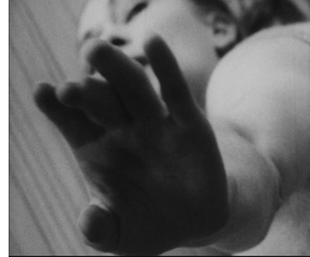 have had little access to such fare before. In quick succession, Unseen Cinema: Early American Avant-Garde Film 1894-1941 (2005), Kino’s three-volume series Avant-Garde: Experimental Cinema 1920s and ’30s (2005), Experimental Cinema 1928-1954 (2007), and Experimental Cinema 1922-1954 (2009), and the forth volume of the “American Treasures” series, Avant-Garde Film 1947-1986 (2009) were released.
have had little access to such fare before. In quick succession, Unseen Cinema: Early American Avant-Garde Film 1894-1941 (2005), Kino’s three-volume series Avant-Garde: Experimental Cinema 1920s and ’30s (2005), Experimental Cinema 1928-1954 (2007), and Experimental Cinema 1922-1954 (2009), and the forth volume of the “American Treasures” series, Avant-Garde Film 1947-1986 (2009) were released.
Now we have another ambitious set, Masterworks of American Avant-Garde Experimental Film 1920-1907. Fans of experimental cinema who have purchased all of the earlier sets might wonder if there is room for yet another extensive collection of American films. Won’t there be a lot of overlap? The answer is a definite no. The body of work by important avant-garde filmmakers is extensive enough to support many boxed-sets.
I can find not a single film in the seven DVDs in Unseen Cinema (which takes a rather broad view of what counts as avant-garde) that is duplicated here. The same is true of the Avant-Garde Film 1947-1986 set. The Kino boxed sets (two discs each) are heavily slanted toward international films, and there is a slight overlap. Flicker Alley’s website has a list of all 37 titles included in Masterworks.
It’s impossible to deal with all the films included in the set here. (The film illustrated at the top is one of them.) I’ll just say that I was happy to see Hilary Harris’ 9 Variations on a Dance Theme (1966/67, right). We used to show it in the introductory film course we taught back in the mid-1970s, when Film Art had not yet been dreamt of. It’s a lovely film in itself, but it also might possibly be the clearest way to get across the ideas of form and style that one could find. Starting with a long shot of the dancer in a segment that simply records her movements, documentary style, the film repeats the same music and choreography eight times, with the cinematography and editing rendering a progressively abstract set of images.
Flicker Alley has put together an essential collection of films that will be new and exciting to many fans. The extras include, generously, three other experimental films. A a helpful booklet contains an introduction by Bruce Posner and brief program notes and filmmaker bios.
The Return of Sherlock Holmes
Until recently the 1916 version of Sherlock Holmes, based on the play by William Gillette, was lost. That seemed exceptionally unfortunate, not only for legions of Holmes fans but for anyone interested in late Victorian stage practices. Gillette’s performance as Holmes was considered the defining one, influencing subsequent portrayals. The play, which was produced in the US in 1899, had the cooperation of Arthur Conan Doyle, whom Gillette consulted during the period when he was writing it. The film version was a precious record from the time when the Holmes series was still being written.
In fact, Conan Doyle had killed Holmes off in 1893 in “The Final Problem,” and at the time when he authorized the play, he still had not resurrected his popular character. Gillette’s play influenced the later stories with such additions the character of the young servant Billy, a character invented by Gillette and later used by Conan Doyle.
In one of those happy endings that occasionally happen with lost films, a copy was discovered in the Cinémathèque française. Not just any old copy but the original nitrate negative of the French release version, which was shown as a serial in four parts in 1919. Apparently no footage was lost, and the main difference between the restored version that we have now and the original American feature film is that the new intertitles have been translated from those of the French release.
The original play has four acts, and the film has compromised between maintaining the interior setting of each act for a long stretch of the film and opening it out with brief exterior scenes and cutaways to other locales. One very lengthy section of the film takes place in the isolated house used by the villains to imprison the heroine, Alice. The sets are somewhat reminiscent of the stage, and yet they have been extended forward, and at times we see at least three walls and perhaps part of a fourth. In many cases, the stage-style set is made more cinematic through the simple device of adding some furniture in the foreground (left). In others, the characters are strung out in a line across the playing space, as in the final “act,” which takes place in Dr. Watson’s office (right).
Physically, Gillette makes a convincing Holmes in terms of the way Conan Doyle describes him, and his performance is restrained and usually lacking in expressivity–which works for a character noted for not exhibiting emotion. Unfortunately Gillette added a love interest for Holmes. Doyle, who apparently didn’t care what others did with Holmes now that he was rid of him, gave his permission. This would be bad enough in itself, but Alice is quite young looking, and Holmes is much older than she. Gillette had originated the role seventeen years earlier, when he was 46. By the time the film was made, he was 63, and though he doesn’t look that old in the film, the age difference between Holmes and Alice is obvious.
Given the survival of the negative, the Blu-ray/DVD transfer is impressive. Serpia toning is used in most scenes, while dark blue tinting represents night exteriors, many of which are nicely filmed (see bottom). The music is by Neil Brand, one of the best accompanists in the business.
There are generous bonuses, including some earlier comic shorts based around the character, Conan Doyle’s Fox Movietone interview, and a typescript of Gillette’s play. The set comes with a booklet with short essays on Gillette and his play, the film adaptation, the restoration, and the music.
The Little Tramp takes shape
Jeffrey Vance begins his essay on Chaplin in the booklet accompanying Chaplin’s Essanay Comedies 1915 with this observation:
If the early slapstick comedy of the Keystone Film Company represents Charles Chaplin’s cinematic infancy, the films he made for the Essanay Film Manufacturing Company are his adolescence. The Essanays find Chaplin in transition, taking greater time and care with each film, experimenting with new ideas, and adding textue to the Little Tramp character that would become his legacy. Chaplin’s Essanay Comedies would become his legacy. Chaplin’s Essanay comedies reveal an artist experimenting with his palette and finding his craft.
The unstated conclusion to the series of companies where Chaplin worked during the 1910s is that the Mutual period saw Chaplin’s maturity as an artist. Flicker Alley has now completed its epic survey of all three periods, with copies restored by the Cineteca Bologna and Lobster Films in cooperation with Blackhawk Films and the Chaplin Mutual and Essanay Project. Many archives provided material. For those who first saw Chaplin in worn 8mm and 16mm copies, these prints are a revelation.
Chaplin’s tinkering with his Tramp character is evident in the most famous short in the set, The Tramp. It begins and ends with the character on the road, going nowhere in particular. In between are sandwiched broad slapstick scenes, quieter comic moments, and a big of the pathos that would become increasingly central to the Tramp.
Early in the film he is capable of saving an innocent farm girl with a wad of money from a trio of thieving hobos, then stealing the money himself (above), and then relenting and giving it back. His comic pacing is sometimes off–way off in an overlong scene of the Tramp, who gets a job at the heroine’s farm, repeatedly poking a fellow farmhand with a pitchfork (a pretty cliched gag to begin with). The Tramp’s clueless attempts at milking a cow work distinctly better, as he tries everything, including turning the cow’s tail into a pump handle. That’s the sort of visual punning that would become one of Chaplin’s comic strengths. There are some funnier scenes, as when the Tramp is forced to bunk in with the farmhand and suffers agonies from his roommate’s smelly socks.
Some quietly funny moments are better, though, as when the Tramp, having been wounded in the leg while trying to foil a burglary attempt, sits complacently enjoying his leisure and assuming that the heroine is in love with him. The absent boyfriend, well-dressed and handsome, soon shows up and, recognizing the inevitable, the Tramp removes himself from the triangle and takes to the road once more. Perhaps more than any other image, this one summarizes how Chaplin’s Tramp was thought of for many years and by millions of people.
Bonuses include some films using discarded footage or cutting together scenes from already-released shorts, as Essanay tried to capitalize as much as possible on Chaplin’s extraordinary international popularity. There is also a booklet with Vance’s essay and a set of program notes. Each of these has a brief description of the restoration process, which is a nice thing to see in a supplement.
Sherlock Holmes (1916)












